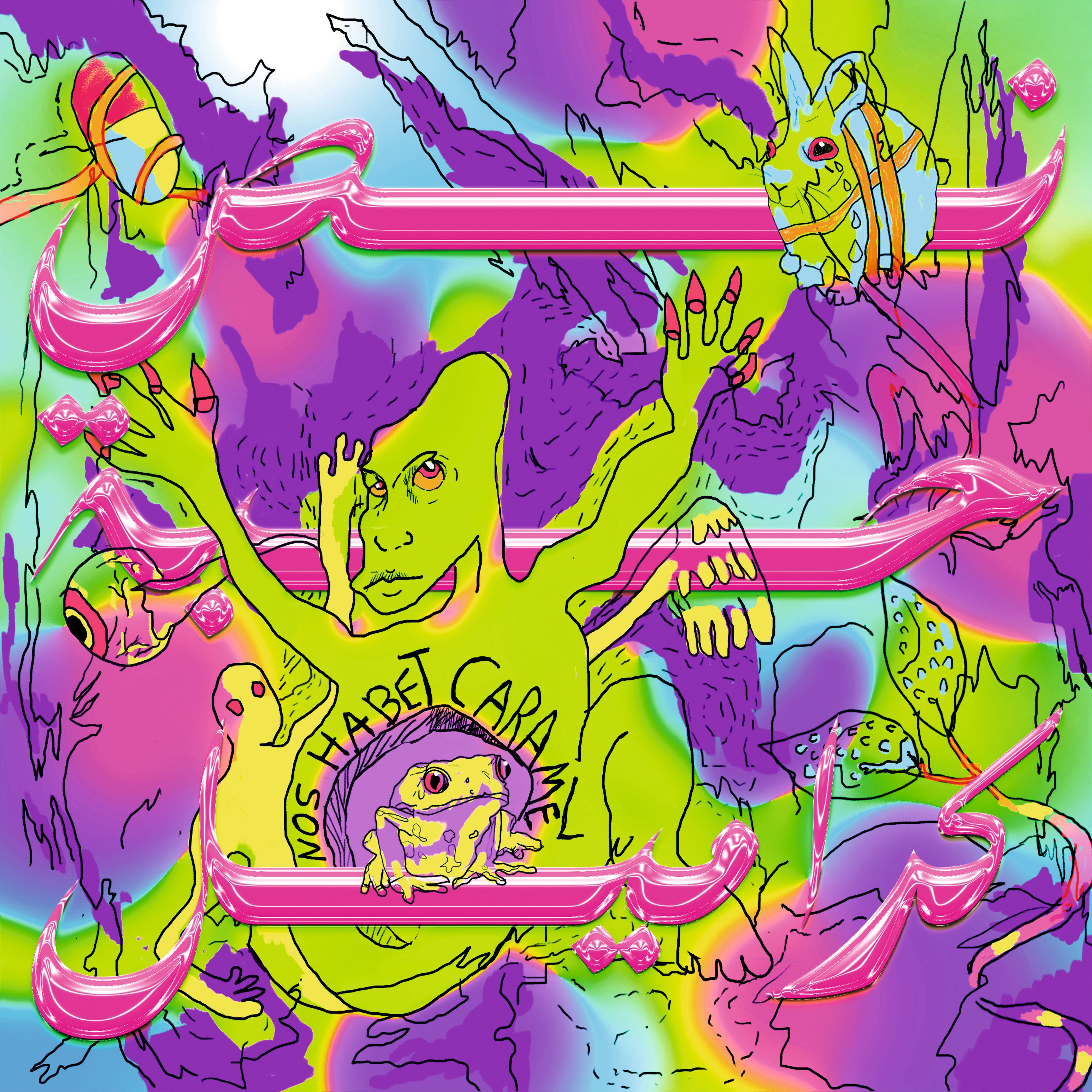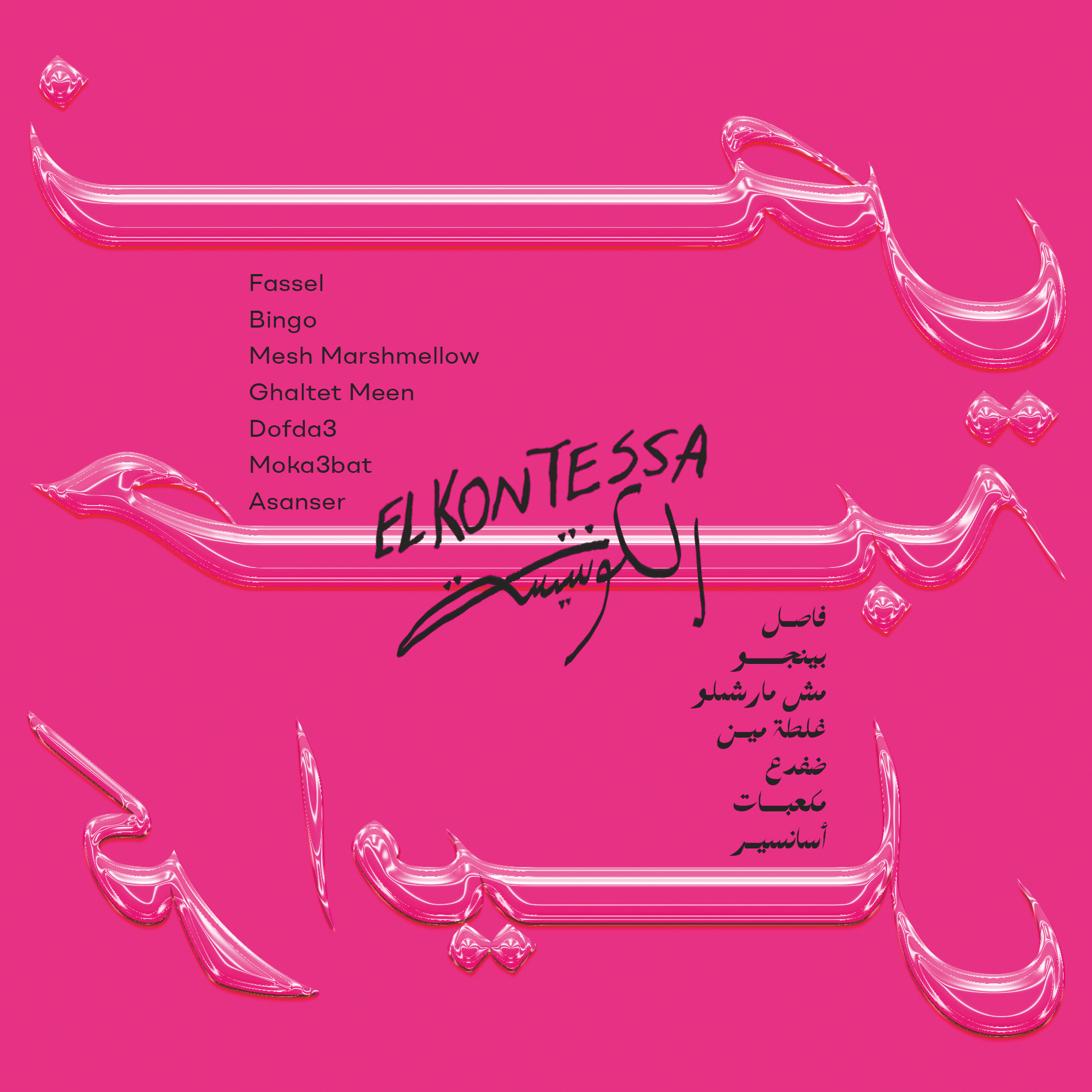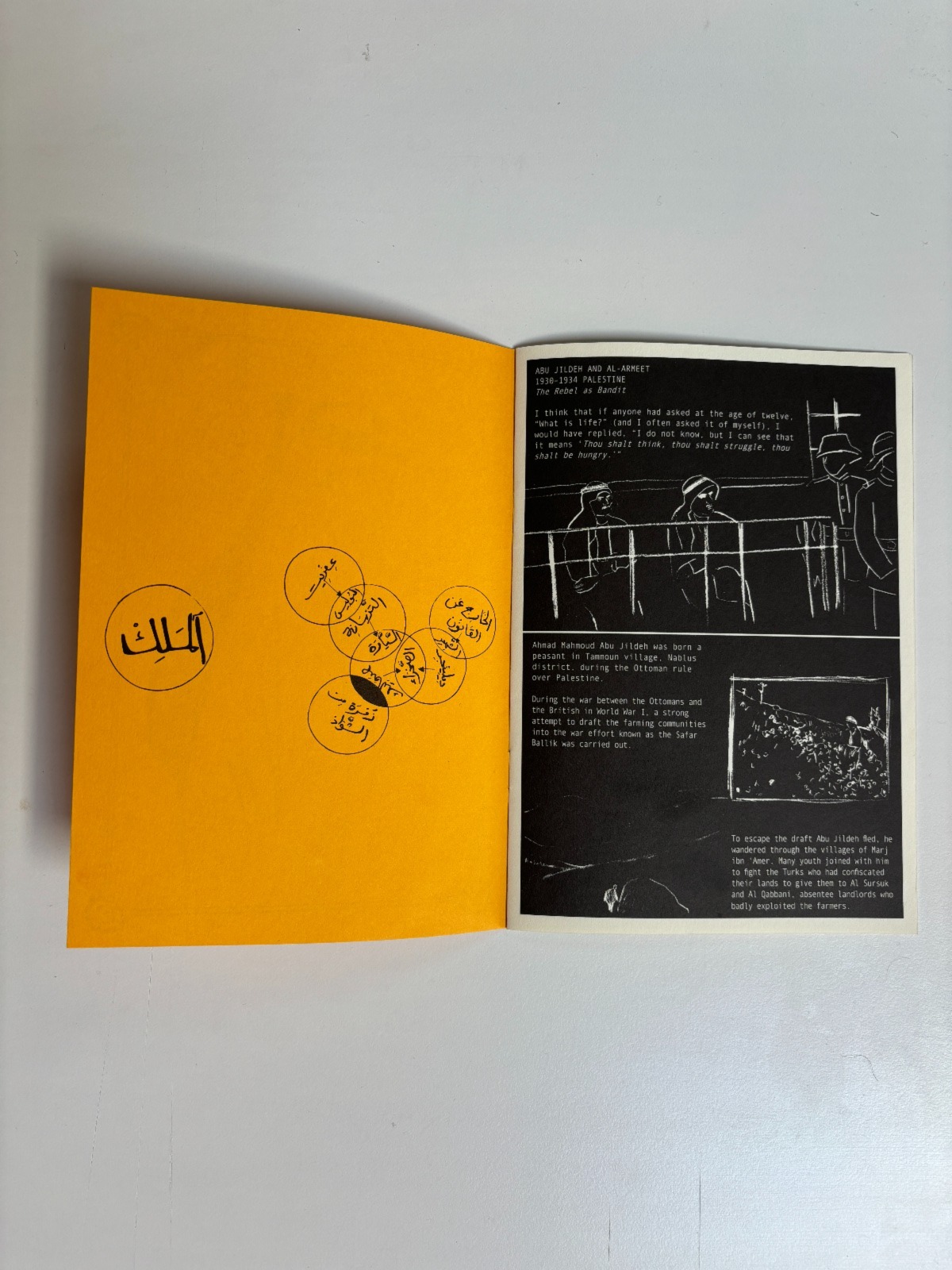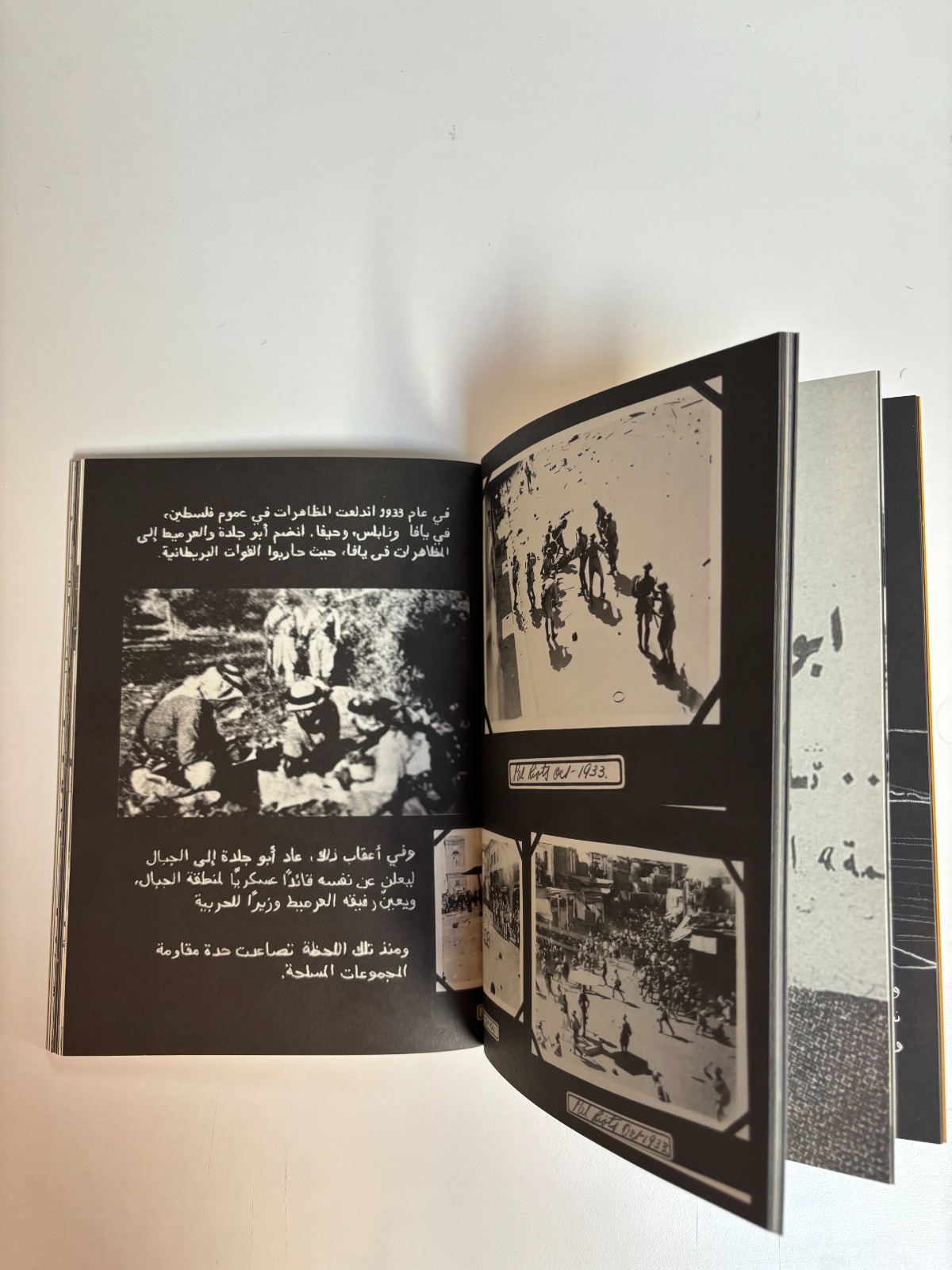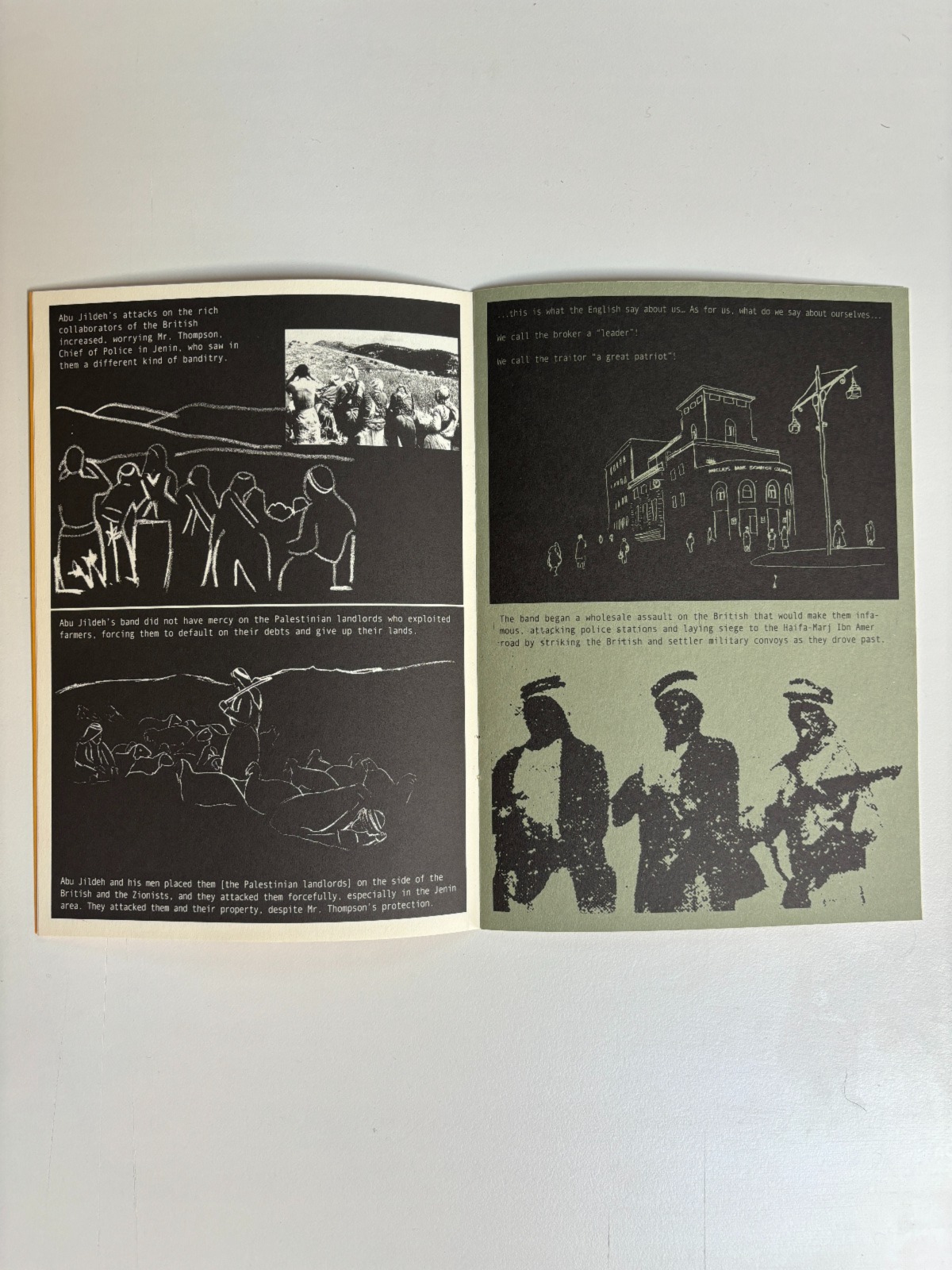To all those we are indebted to
إلى كلِّ الذين نحن مَدينون لهم

Alia Al-Sabi and Amany Khalifa take apart Palestinian ‘return’ through a conversation that unfolds across literary, temporal, and spacial registers. Amr Amer and Laura al-Tibi weave together song and critical analysis, unsettling colonial conceptions of Palestinians’ relation to their land economically and existentially. Basel Abbas and Ruanne Abou-Rahme offer a comprehensive hypothesis of the “negative,” unfolding across poetry, images, and illustration. Adam HajYahia and Haitham Haddad formulate an aesthetic theory of revolt, examined through text, images, and illustration. By focusing on the interplay between text and artistic form, “To all those we are indebted to” proposes new methods of thinking and creating, aesthetically and politically.
"إلى كلِّ الذين نحن مَدينون لهم" هي سلسلة مكونة من أربع كتيّبات التي تطرح مناقشات بصريّة، شعريّة، ونقديّة لمفهوم سياسة "الرفض" في السياق الفلسطيني. تم إنتاج كل كتيّب من خلال تعاون ثنائي بين فنانين/ات وكتّاب لاستكشاف وتطوير طرق متجددة للرفض وإنتاج المعرفة عبر إيماءات تدمج ما بين التحليل السياسي والسرد الجماليّ.
عالية السبع وأماني خليفة تقومان بتفكيك "عودة" الفلسطينيّين من خلال محادثةٍ تتكشَّف عبر دفاتر الأدب، والزمان والمكان. عمرو عامر ولورا الطيبي ينسجان معاً الأغنية والتحليل النقدي، ليخلخلا المفاهيم الاستعماريّة لعلاقةِ الفلسطينيّين بأرضهم اقتصادياًّ ووجودياًّ. باسل عباس وروان أبو رحمة يقدّمان فرضيّةً شاملةً عن "الناقص"، الذي يتجلّى في الشعر، والصورة والشكل. آدم حاج يحيى وهيثم حداد يصيغان نظريّة جماليّة للثورة، يقومان ببحثِها من خلال النص، والصورة والشكل. من خلال التركيز على التفاعل بين النصِّ والشكل الفني، يقترحُ "إلى كلِّ الذين نحن مَدينون لهم" أساليبَ جديدة للتفكير والإبداع جمالياًّ وسياسياًّ.
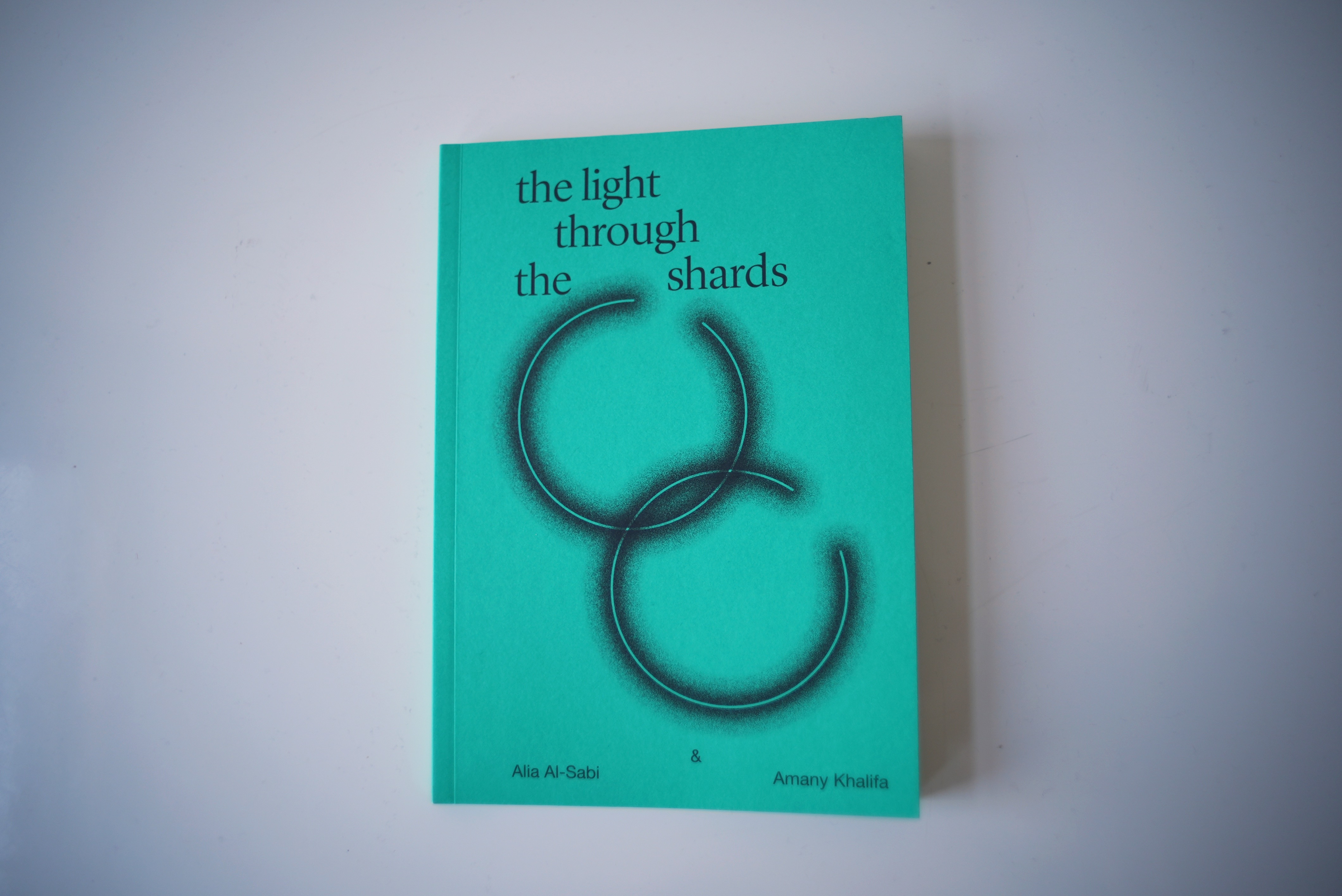



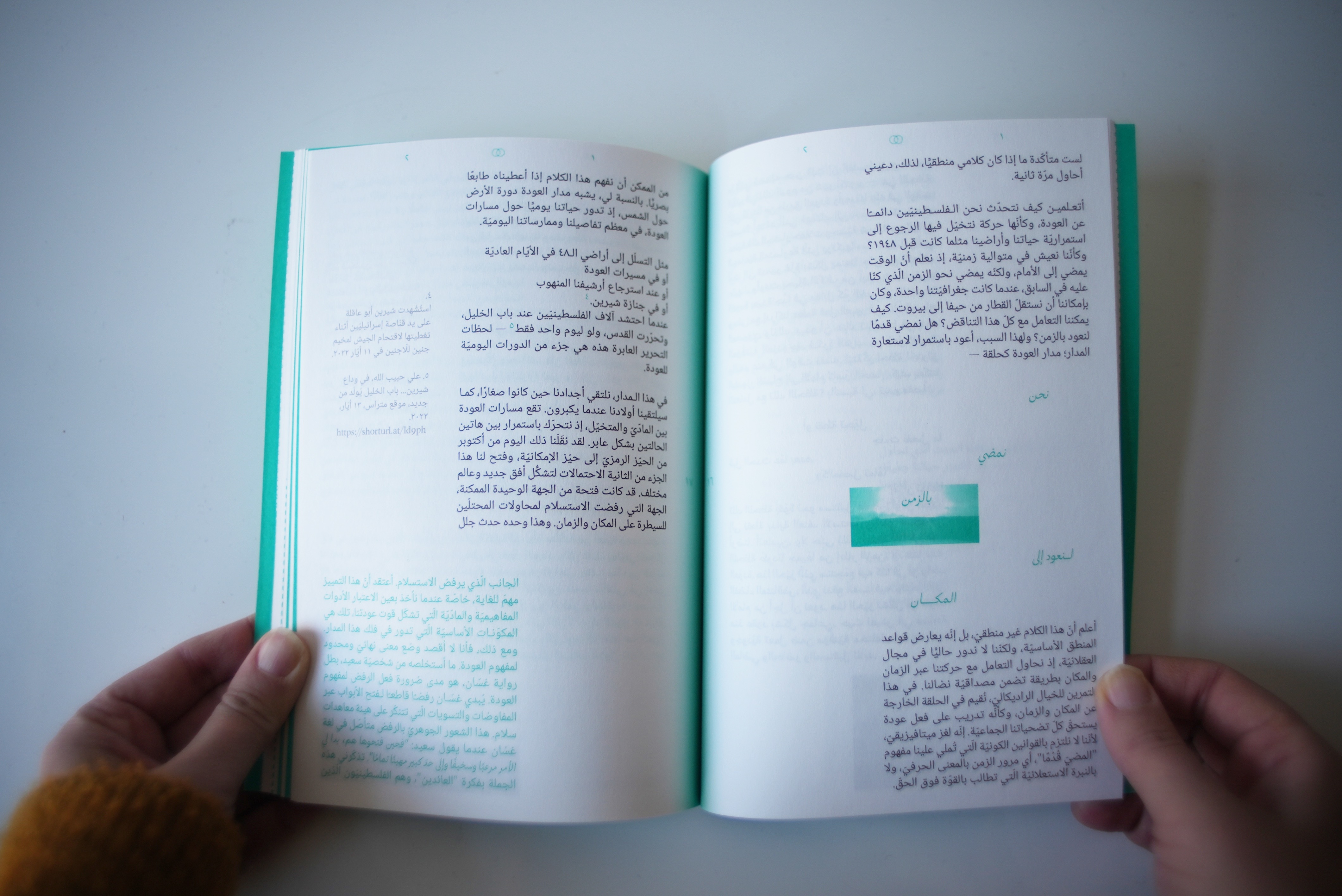

The light through the shards
من تلك الشذرات انبثق الفجر
This text is a conversation replete with broken edges and fragmentations, jagged in its attempt to grapple with insurmountable grief and loss. In it is a summoning of our legacies of struggle, as we search for guiding certainties such as that of the sun.
Embodied in this rehearsal is a sensorial envisioning of an orbit of return, entangled with refusal, memory, and grief, and ruptured by the inconceivable violence of annihilation of our people in Gaza.
يتخذ النص الحوار شكلا ومضمونا لنفسه. ويعترف ضمنيا بعدم قدرته على التكوّن كصياغة متجانسة وواضحة المعايير، كيف لا وهو نتاج واقع مثقل بالأسى والفقد. يستحضر المعاني من الإرث الثوريّ، لعلها تكون الدليل نحو يقين الشمس.
يتجسد النص كمحاولة أو تمرين حسيّ لتصور العودة على هيئة مدار. حركة دائمة تتداخل من خلالها الأزمنة ومفاهيم مثل الرفض والذاكرة والأسى. ولكن سرعان ما تعجز المخيلة أمام واقع الإبادة بكل ما يحمله من ممارسات وحشية ضد أهلنا في قطاع غزة.
Alia Al-Sabi and Amany Khalifa
Alia Al-Sabi is a writer and researcher based in Brooklyn, New York. She is currently a PhD Candidate in the Performance Studies department at NYU, where she is researching prison literatures in various archives in Palestine. Her research focus considers theories of movement and subversion within logics of surveillance and confinement by examining the textual practices produced within carceral structures.
Amany Khalifa is a doctoral student in the Department of Anthropology at Columbia University. Amany is interested in studying social movements as sites of Refusal in Occupied Palestine. Her research explores how political collectivity reconfigures the present and aspires to reshape the future.
علياء السبع وأماني خليفة
علياء السبع كاتبة وباحثة مقيمة في بروكلين، نيويورك، وهي حاليا طالبة دكتوراه في قسم الدراسات الأدائية في جامعة نيويورك، حيث تقوم بالبحث في أدب السجون في أرشيفات مختلفة في فلسطين. يركز بحثها على نظريات الحركة ضمن منطق المراقبة والتضييق من خلال قراءة الممارسات النصية المنتجة داخل منظومة السجن.
أماني خليفة، طالبة دكتوراة في قسم الأنثروبولجيا في جامعة كولومبيا (نيويورك). مهتمة بدراسة الحراكات الاجتماعية في فلسطين كمواقع لممارسة سياسات الرفض. من خلال هذه القراءة تسعى لفهم التصورات والتشكلات السياسية الجمعية لهذه الحراكات من خلال ممارستها اليومية وتصوراتها عن المستقبل.
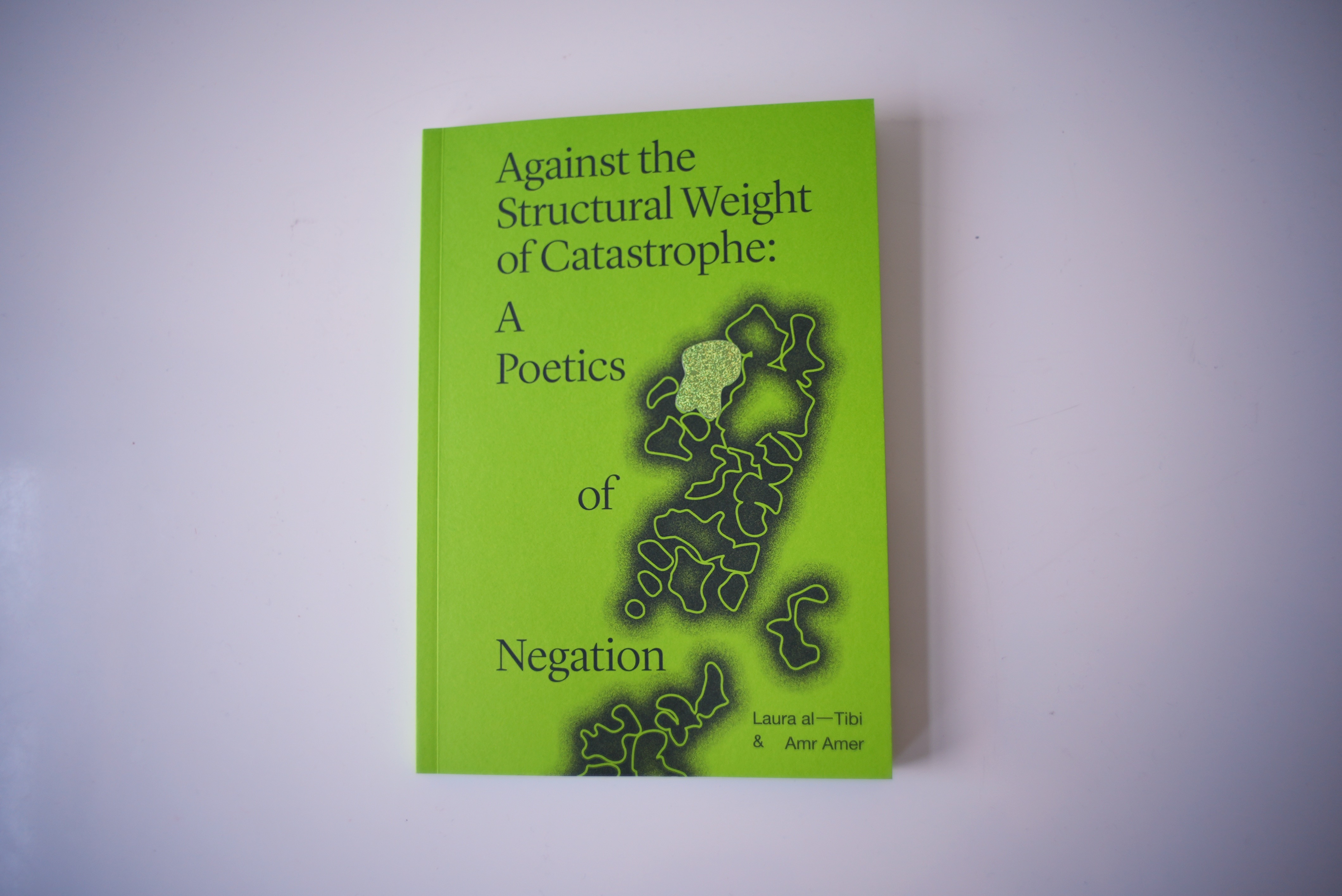
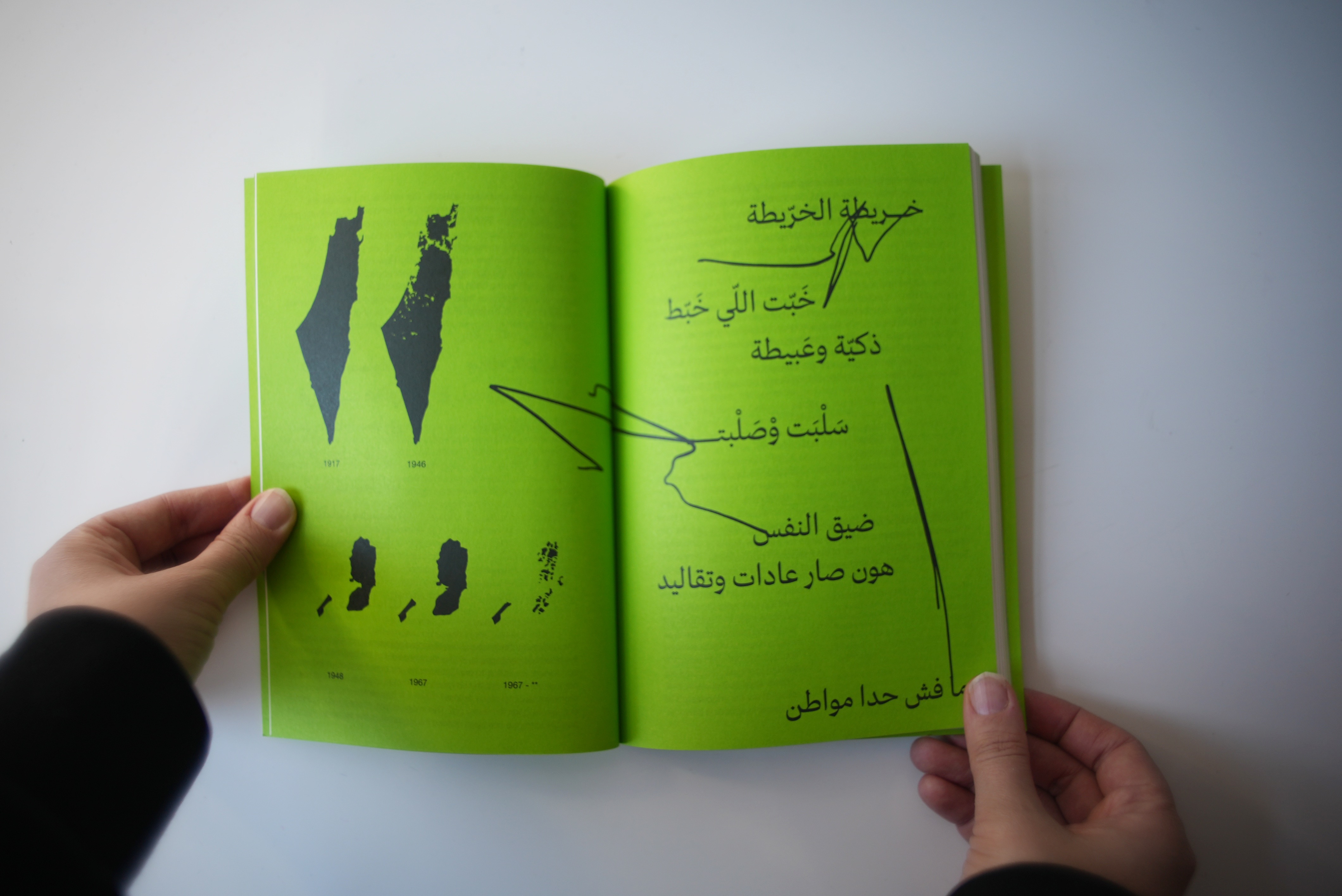
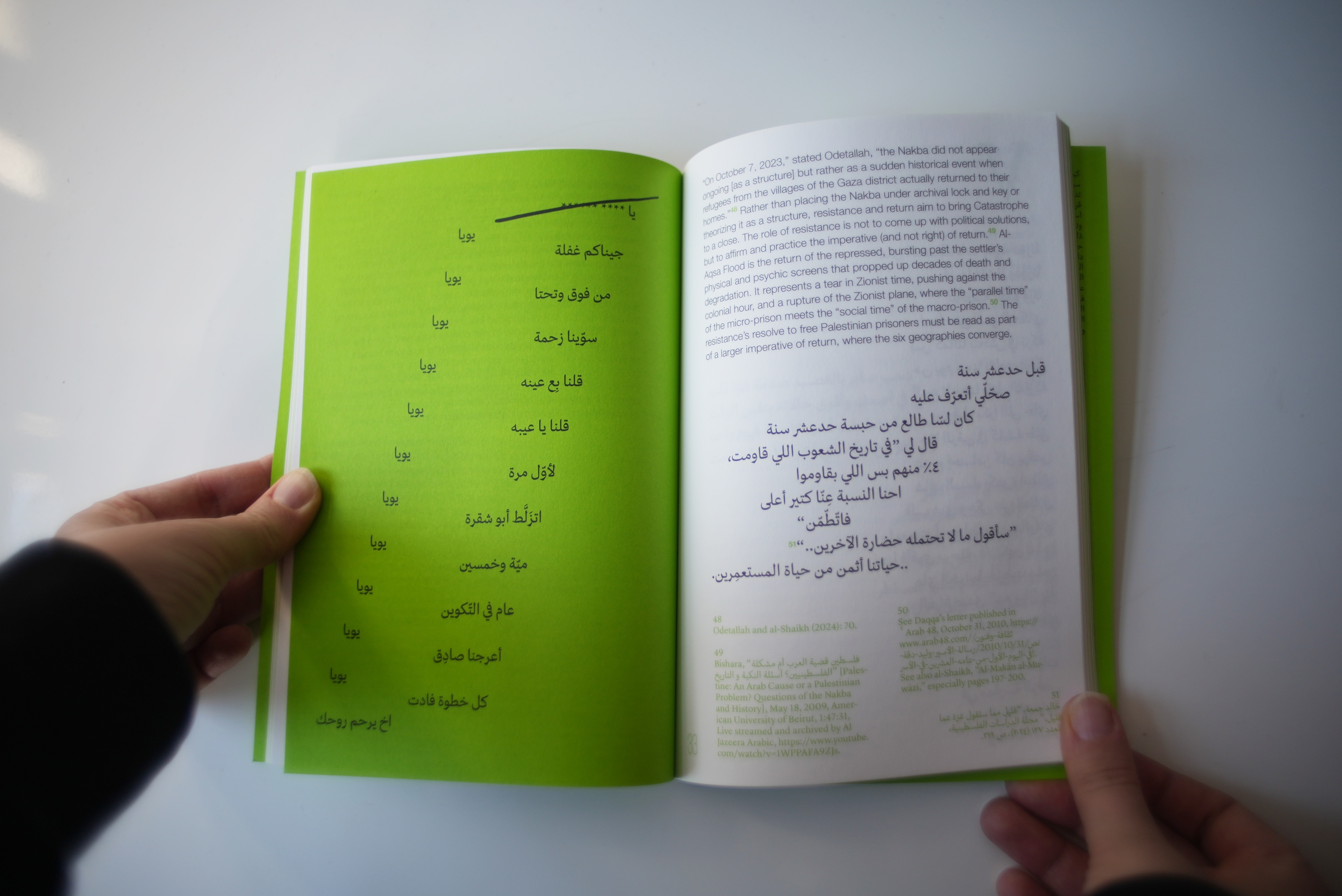
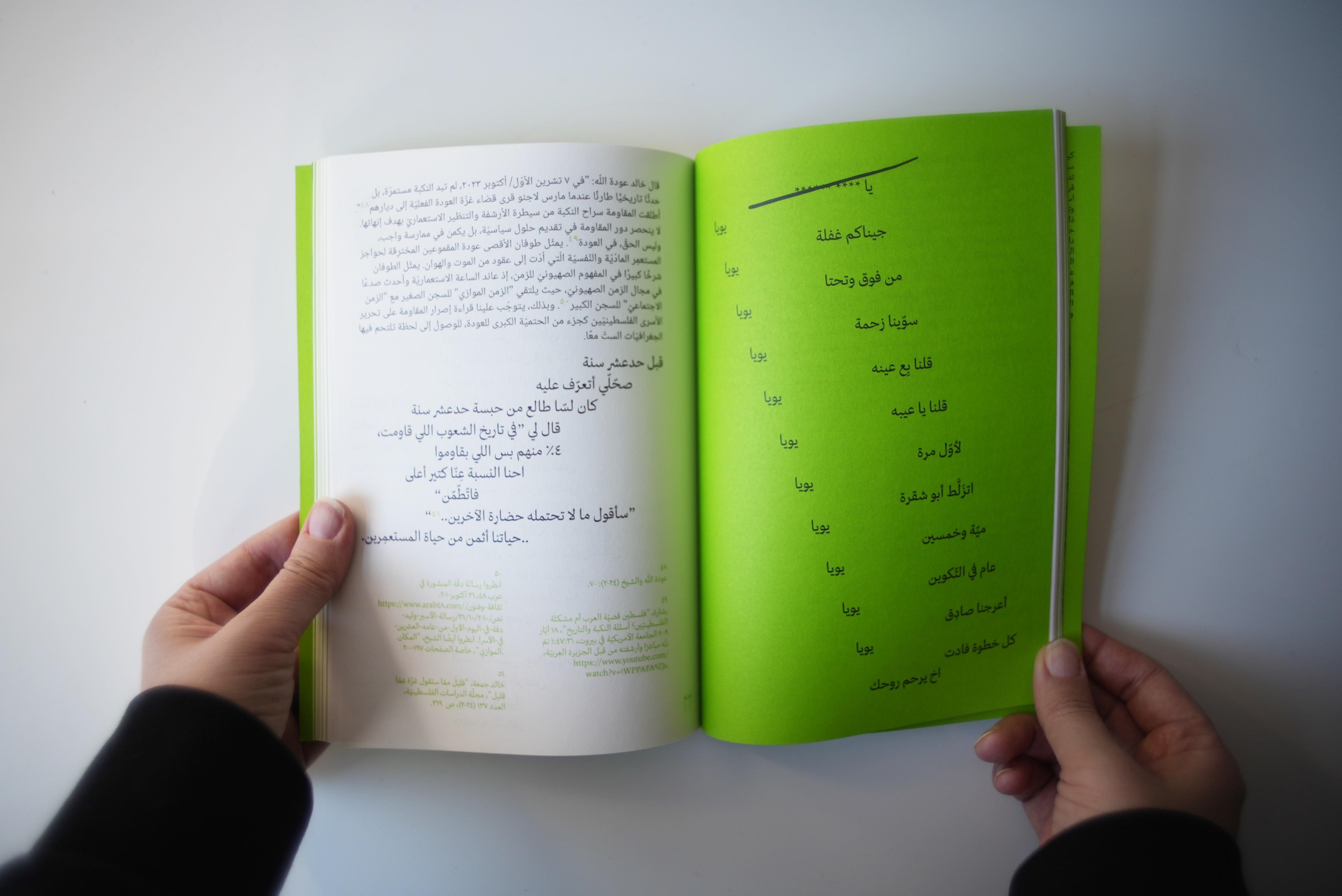
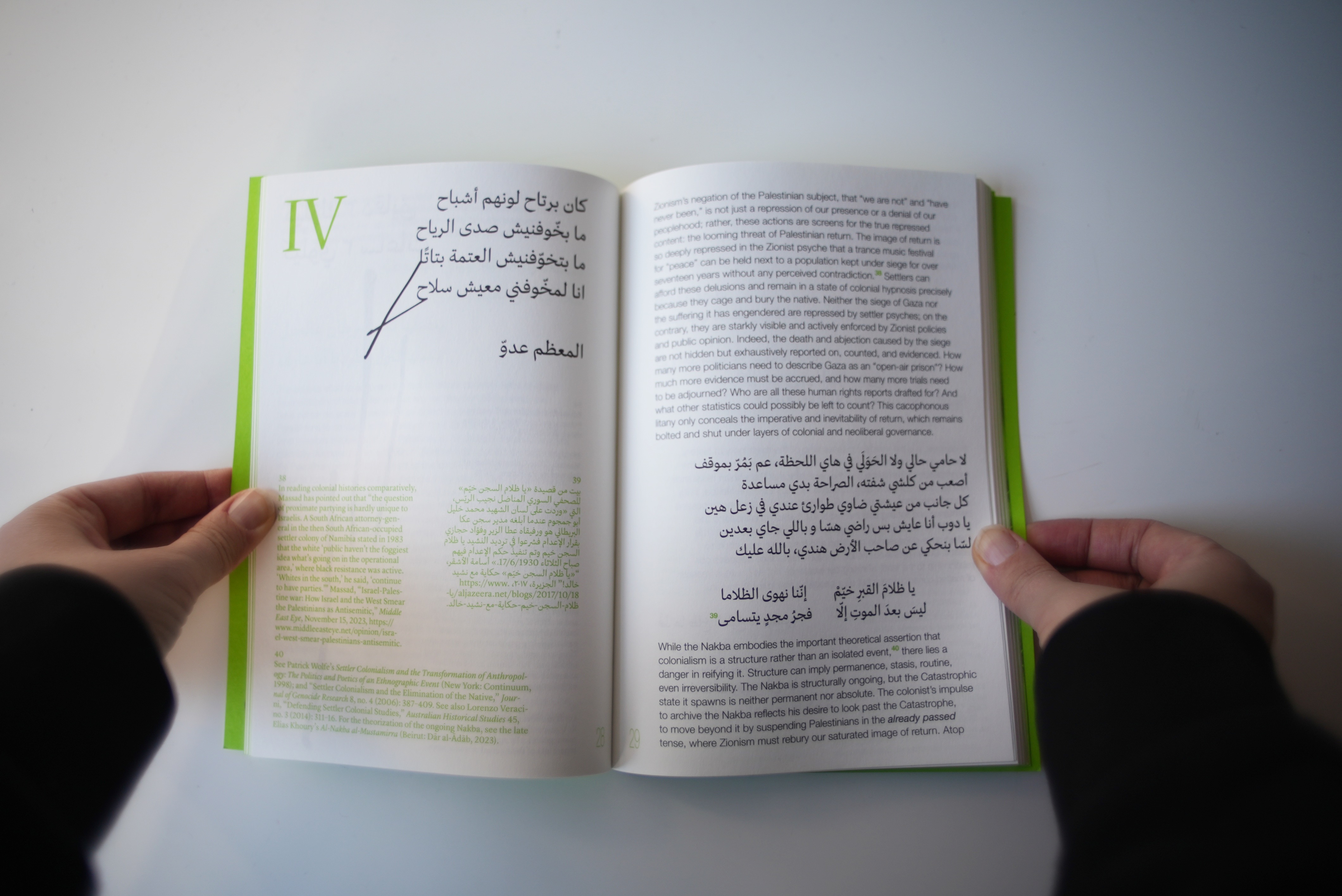
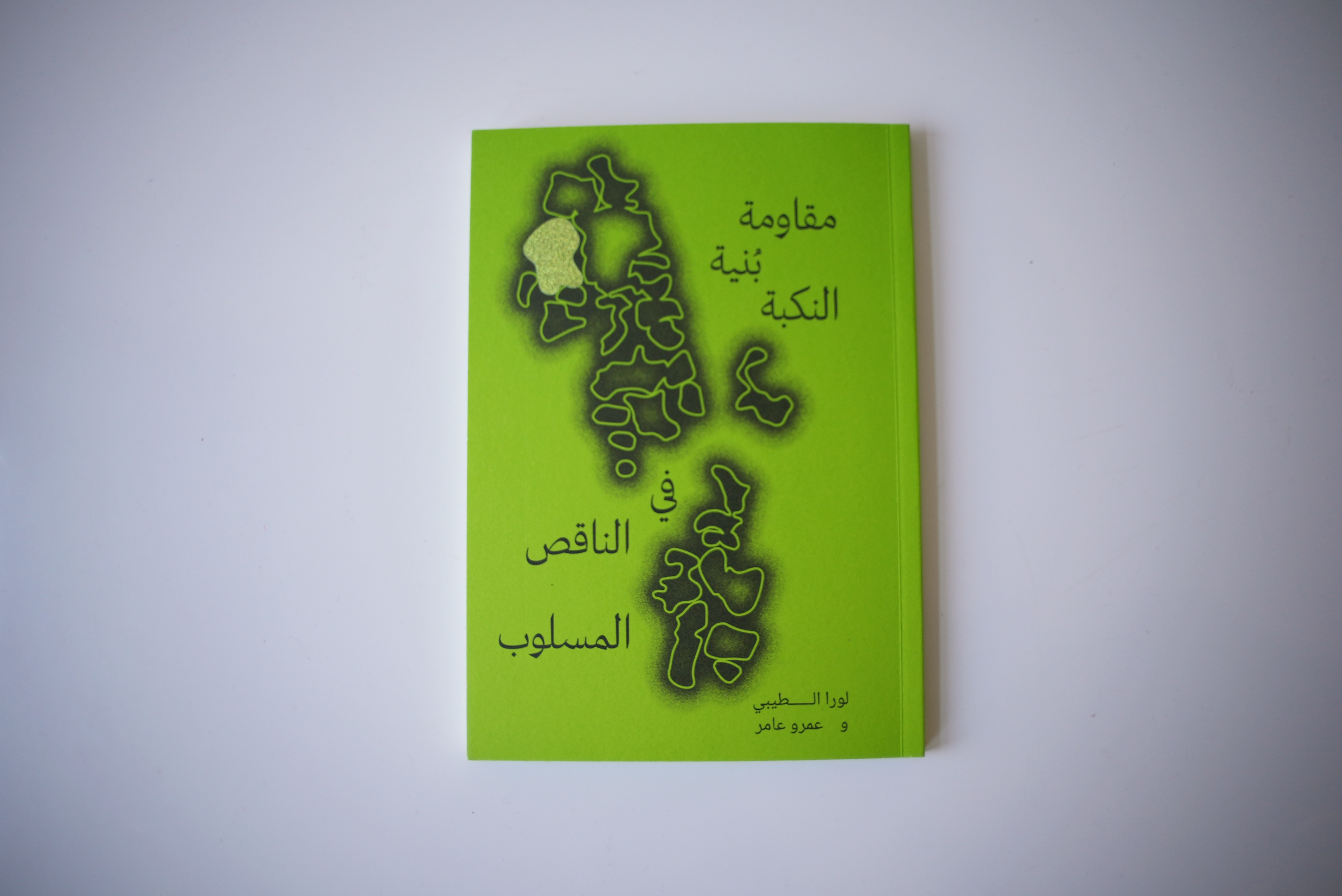
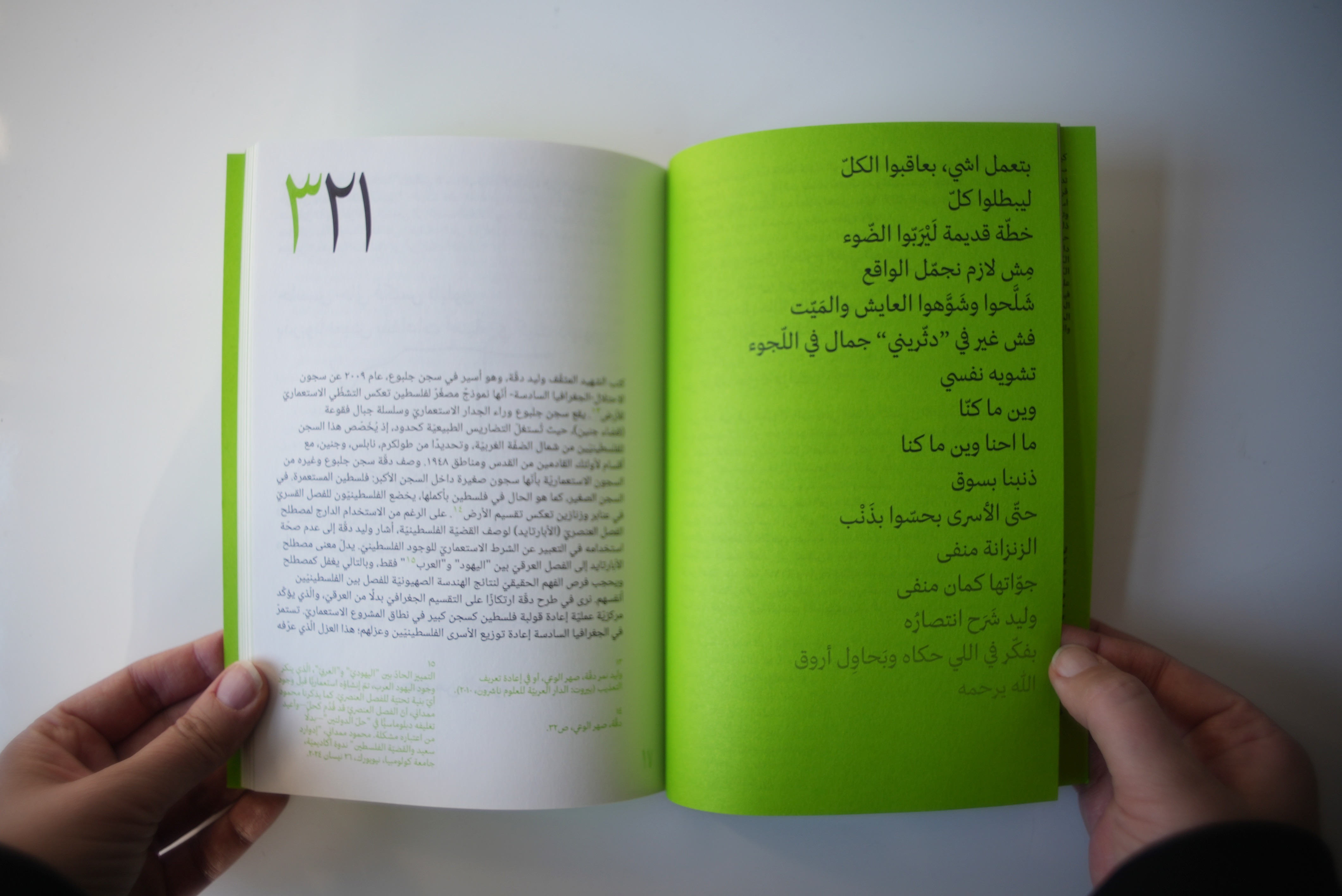
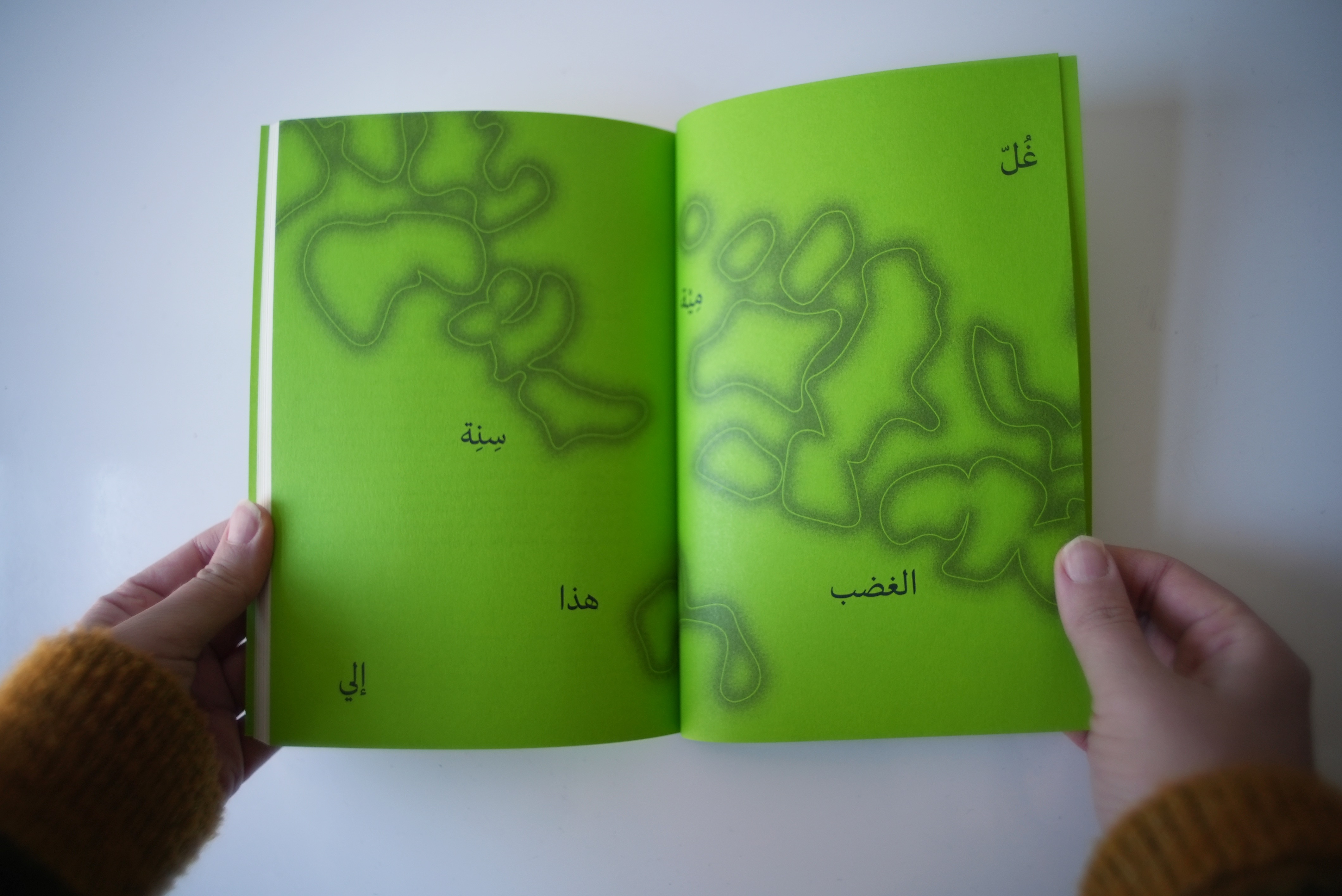
Against the Structural Weight of Catastrophe: A Poetics of Negation
مقاومة وطأة النكبة المستمرة في الناقص المسلوب
What form does the enormity of the Palestinian Catastrophe take, and by which political grammars is its ongoing condition disrupted and contested? Combining materialist critique with poetic interjections, the authors propose reading the Nakba neither as an isolated event nor a reified structure, but as a series of violent negations running parallel to the catalytic force of resistance. In doing so, they redirect focus from overdetermined theorizations of colonial violence to generative practices of refusal, cautioning against the structural heft and imposed permanence of settler-colonialism. As Palestinians have repeatedly shown, the colonial limit is not impenetrable. The booklet also critically engages with iterations of Palestine’s vanishing map, commonly circulated as a convenient summary of dispossession. These cartographic representations are reinterpreted as a negative image that comes into focus with each act of resistance, gradually processing as land and self are restored.
كيف تتجلى فداحة النكبة الفلسطينية، ووفقًا لأي أنساق سياسية وشعبية يتم مقاومة حالتها المستمرة؟ من خلال تداخلات شعرية وتحليلات مادية تاريخية، يقترح المؤلفان قراءة النكبة ليس كحدث ماضٍ منفصل عن الحاضر، ولا كبنية استعمارية متصلبة وأبدية، بل كحالة استئصال ومحو تنبثق وتزداد قوةً وتجدداً من ديمومة المقاومة الفلسطينية. مع ذلك، يحذّر النص من وطأة النظريات البنيوية حول الاستعمار، حيث قد تؤدي إلى تكلّس وترسيخ الاستعمار الاستيطاني كأمر دائم لا رجعة فيه. كما أظهر الشعب الفلسطيني مراراً أن الكيان الاستعماري قابل للاختراق. علاوة على ذلك، يتناول الكتيّب بشكل نقدي خريطة فلسطين المتلاشية التي تتداول على نطاق واسع كملخّص يختزل حالات السلب والتهجير. فيعيد المؤلفان تفسير هذه التمثيلات الكارتوغرافية (الرسم الخرائطي) كصورة سالبة تتضح وتتبلور مع ممارسات المقاومة بجميع أشكالها، مما يسهم في استعادة كافة الأراضي والعودة إليها.
Laura al-Tibi and Amr Amer
Laura al-Tibi is a Palestinian writer and PhD student at Columbia University, specializing in the visual and literary histories of Palestine. Her research delves into the social and political dynamics of Palestinian photography before 1948, along with its aftermath of material devastation and historical erasure.
Amr Amer is a Palestinian musician who has been releasing music under the alias "Haykal" since 2012. His writing navigates between political and cultural themes, intertwined with personal reflections. At times, he strips away lyrics entirely, letting the rhythm and beats take center stage. He has collaborated with various artists across Palestine and the Arab world, including Makimakkuk, Muqata’a, Julmud, and El Rass. To date, he has released four EPs and is currently working on his first full-length album.
لورا الطيبي وعمرو عامر
لورا الطيبي كاتبة وطالبة دكتوراه فلسطينية في جامعة كولومبيا، تدرس تاريخ الفن البصريّ والأدبيّ الفلسطيني. تتمحور أبحاثها حول فهم التيّارات الاجتماعيّة والسياسيّة في التصوير الفوتوغرافيّ، خاصةً في الفترة التي سبقت عام ١٩٤٨ وما تلاها من تدمير ماديّ ومحو تاريخيّ. كما توظف في كتابتها مقاربات أدبيّة وشفويّة ترتكز على الخيال والذاكرة لاستحضار واسترجاع تاريخ خارج نطاق المعايير الاستعماريّة.
عمرو عامر موسيقي فلسطيني بدأ مسيرته الفنية في عام ٢٠١٢ تحت الاسم الحركي "هيكل." يتنوع محتوى نصّه بين نقاشات سياسية وثقافية وتجارب شخصية، وأحياناً يعطي الأولوية للإيقاع الموسيقي بحيث يصبح هو المعنى المراد، ذلك مع تنقل دائم بين المعاني المفهومة والمبهمة. تعاون مع عدد من الفنانين من فلسطين والعالم العربي، منهم ماكي مكّوك، مقاطعة، جلمود، والرّاس. حتى الآن، أصدر أربعة ألبومات قصيرة وهو حالياً يعمل على ألبومه المطوّل الأول.
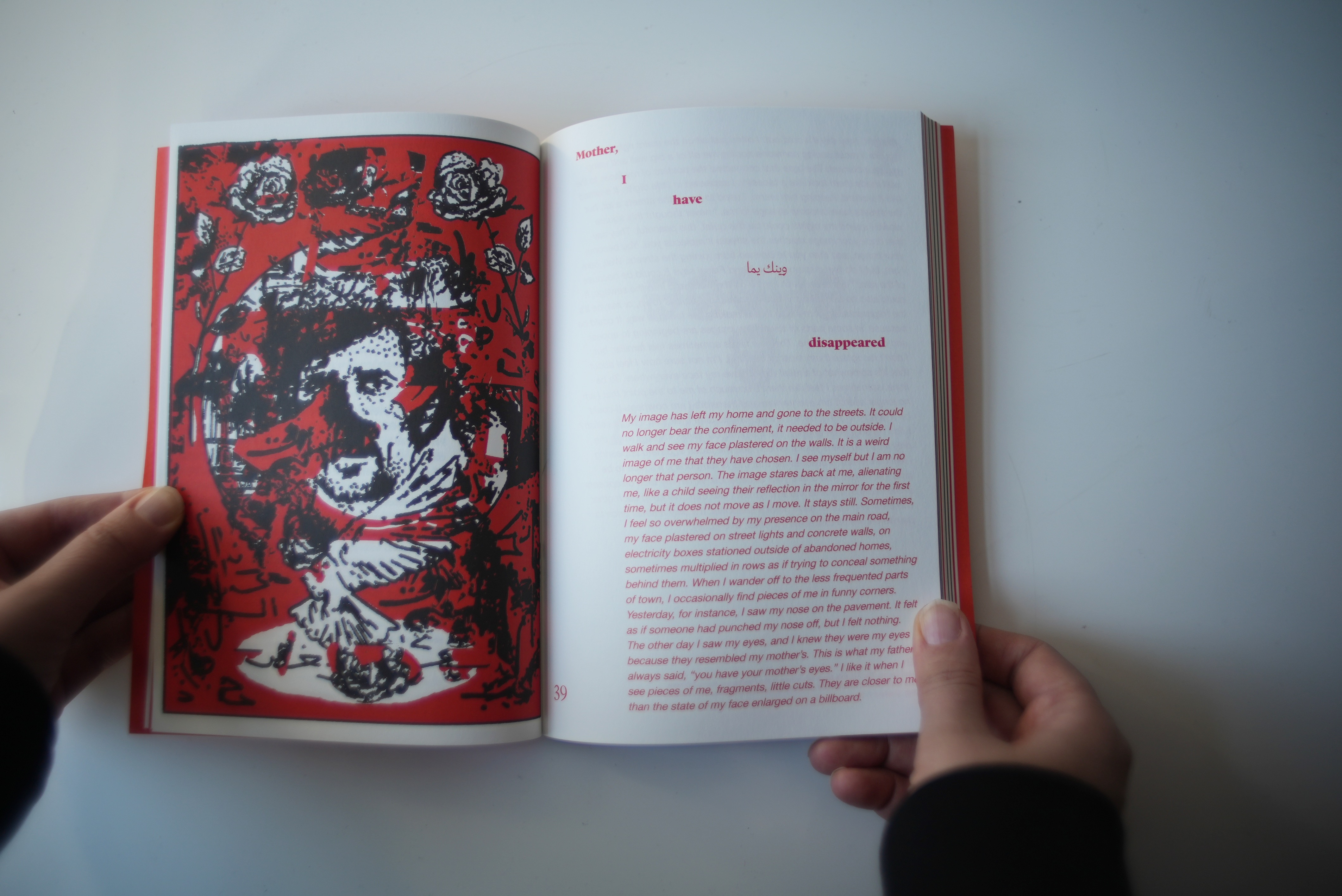

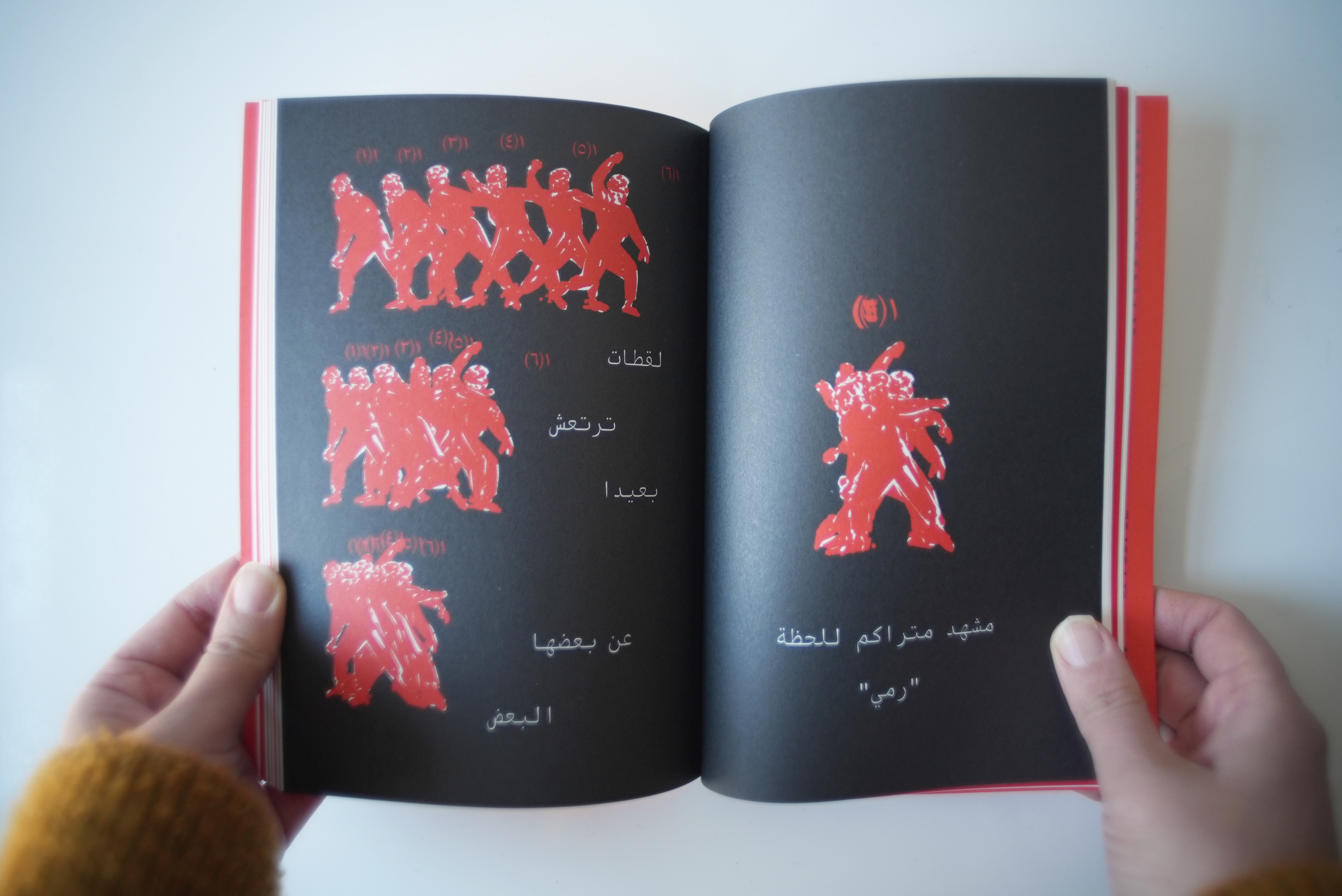
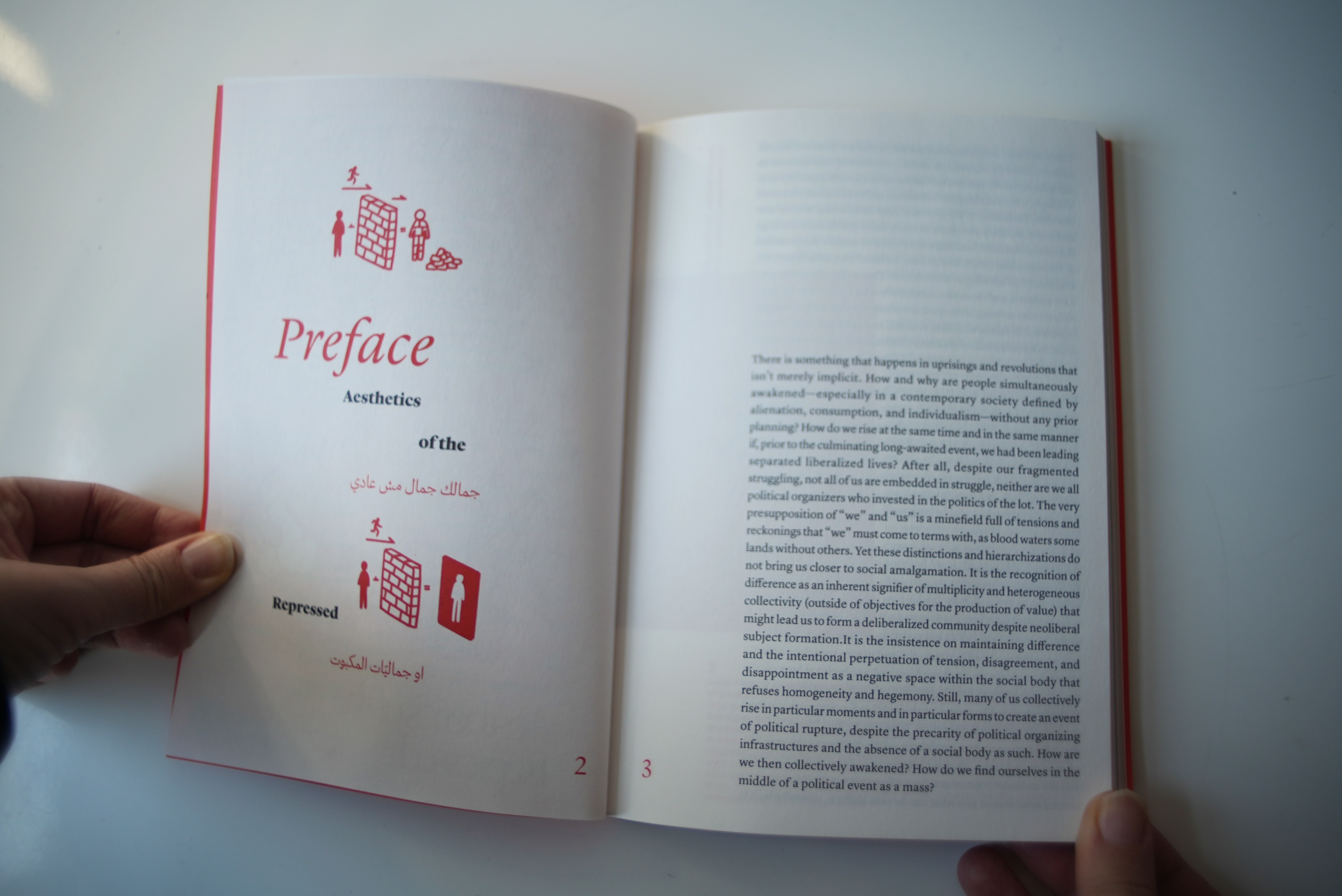
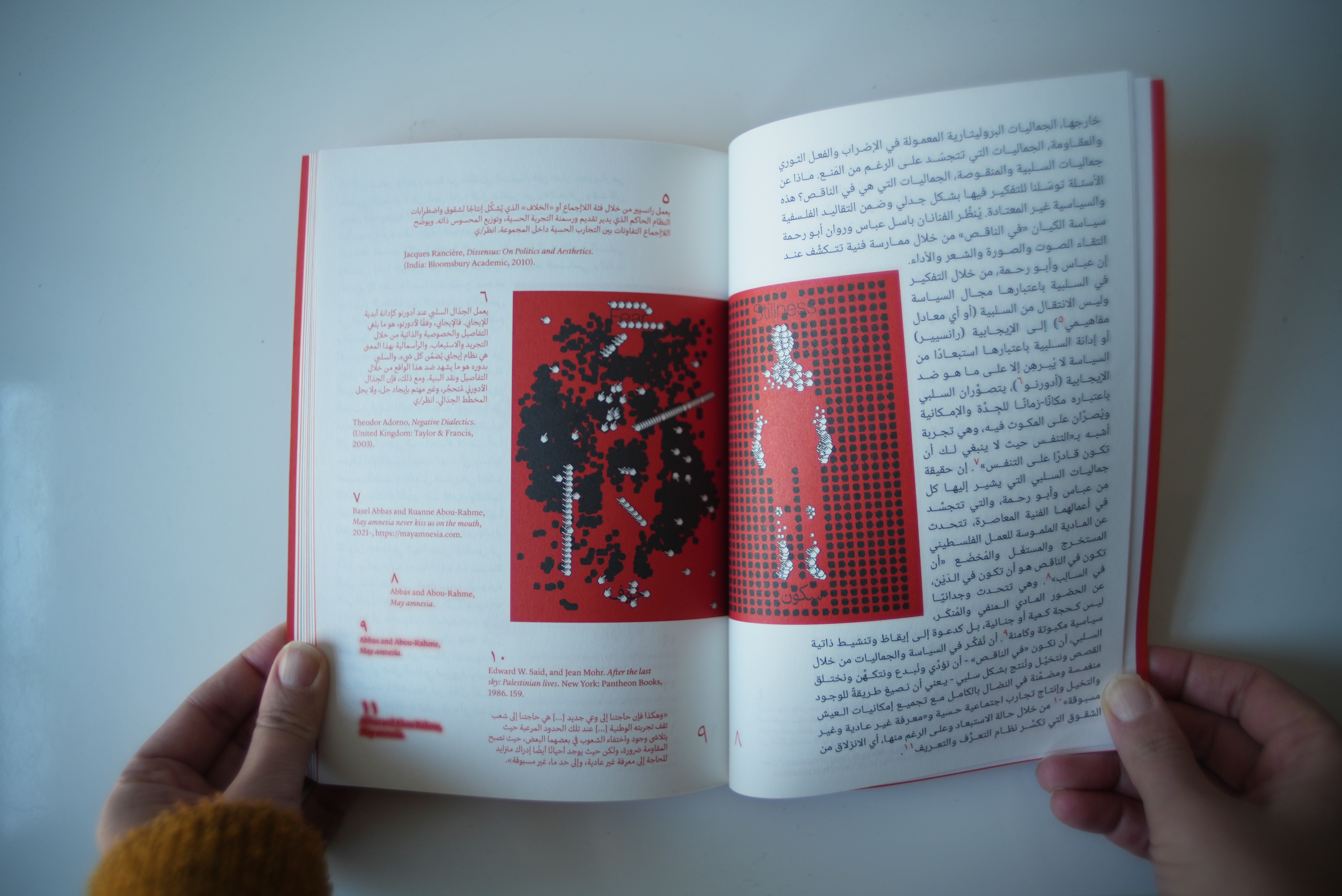
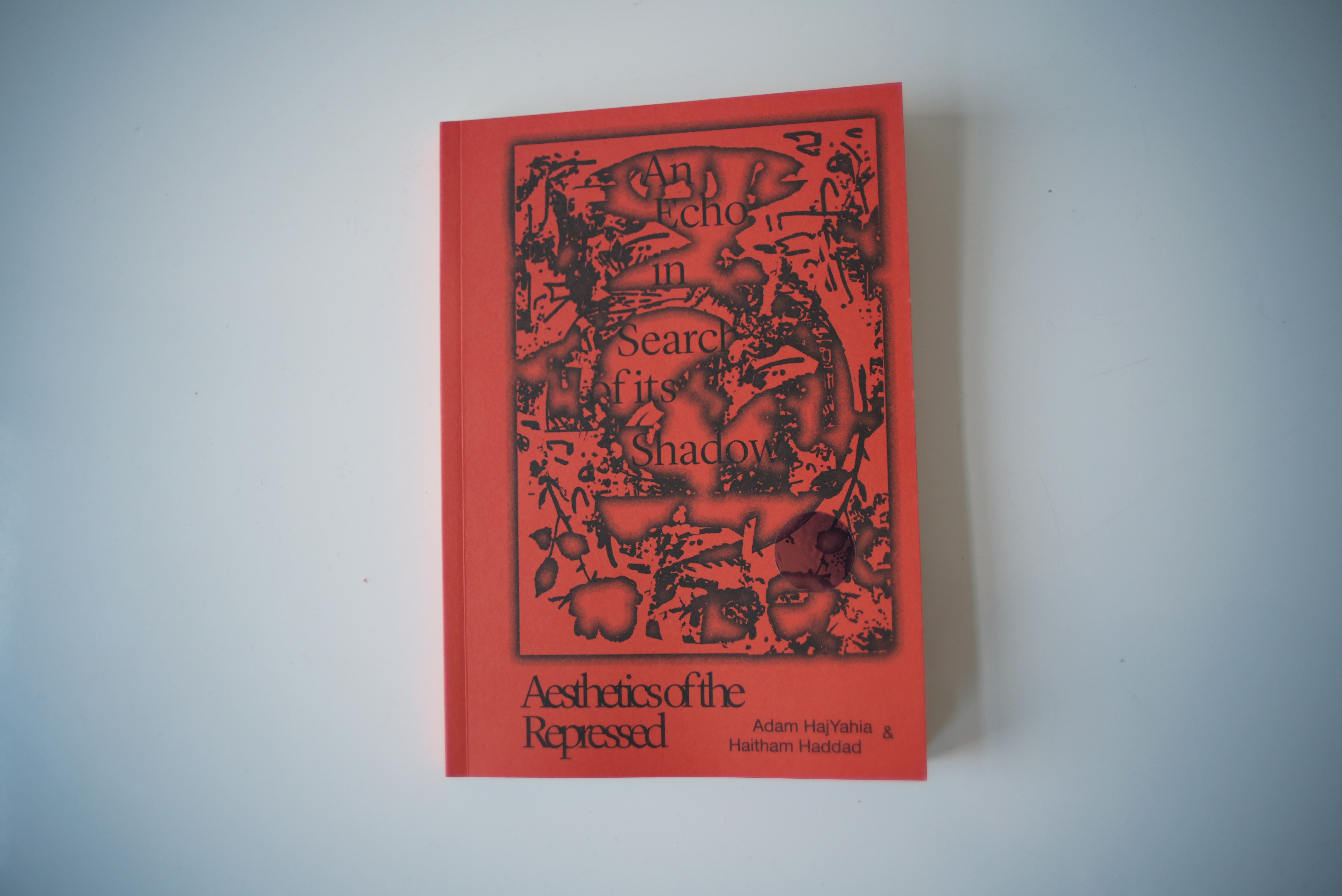
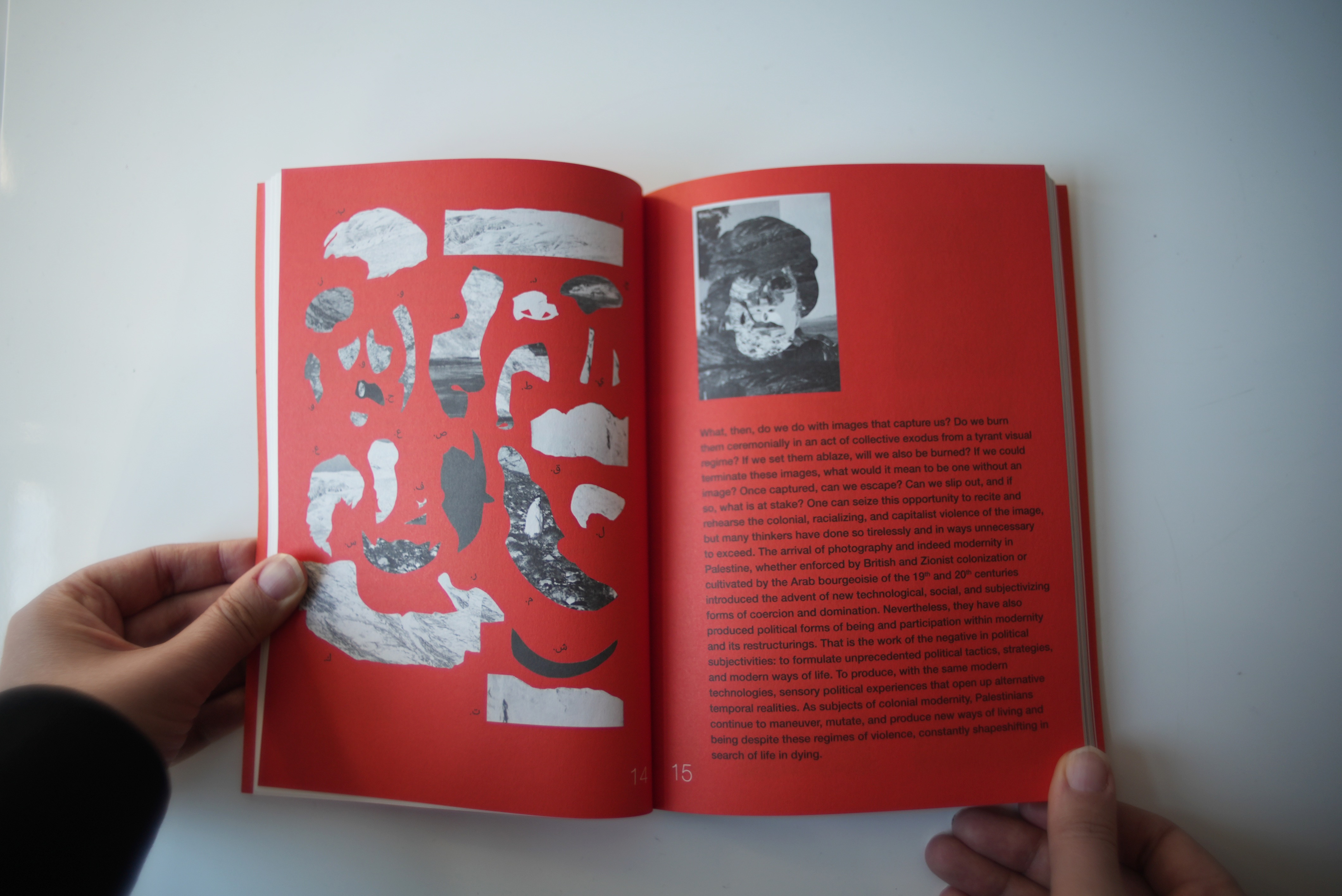
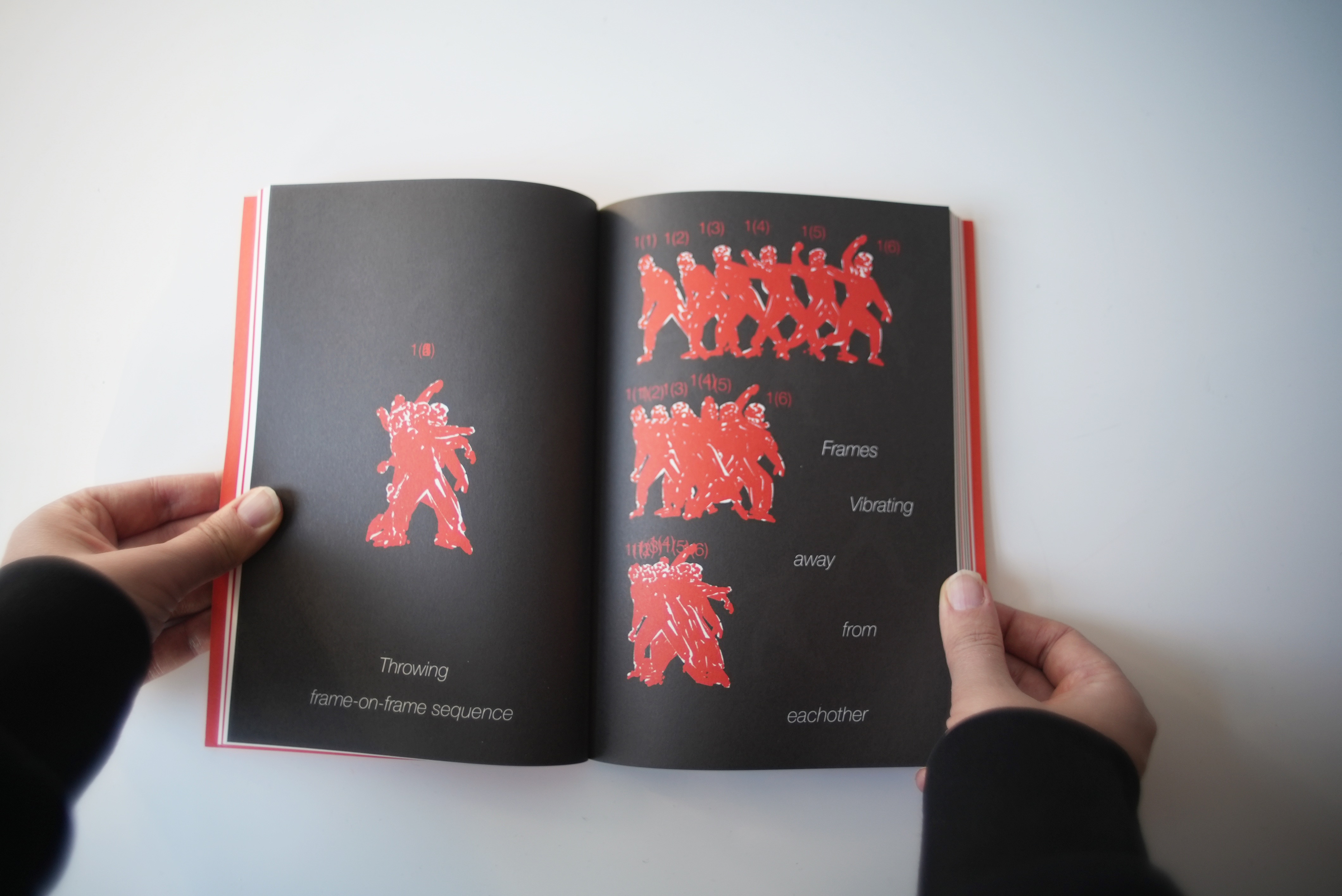

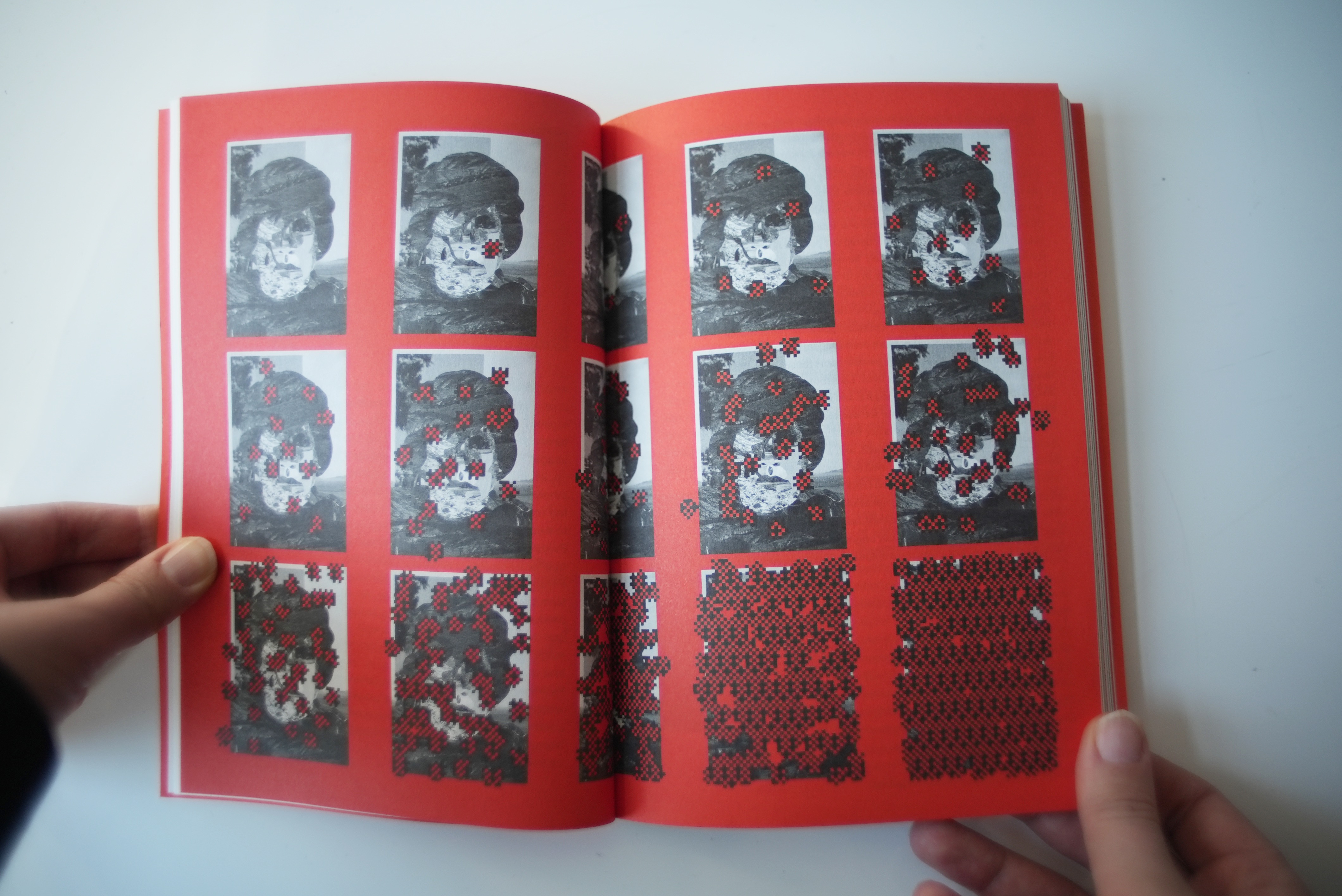

An Echo in Search of its Shadow, Aesthetics of the Repressed
صدى يتوق الى طيفه، جماليات المكبوت
What aesthetic practices have Palestinians been employing throughout their revolutionary anti-colonial tradition, both historically and in contemporary times? How can we read the performative gestures, image-making techniques, and singing replete in Palestine’s streets as ones embedded within a collective psychosocial and material experience and not as arbitrary isolated events? In An Echo in Search of its Shadow, Aesthetics of the Repressed Adam HajYahia and Haitham Haddad formulate an aesthetic theory of revolt by examining anti-colonial praxis. Unfolding through analysis, image-making, and poetics, HajYahia and Haddad assemble a new framework from which to understand dialectics between the visual and the audial, body and soul, form and content. Instead of the usual approach to aesthetics and politics where aesthetics are practiced and politics are thought, An Echo in Search of Its Shadow urges us to practice politics and think aesthetics.
ما هي الممارسات الجماليّة التي يستخدمها الفلسطينيون في نضالاتهم وثوراتهم المناهضة للاستعمار سواء تاريخياً أو في الزمن المعاصر؟ كيف يمكننا قراءة الإيماءات الأدائية، وممارسات صناعة الصور، والغناء الذي يملأ شوارع فلسطين كظواهر مغروسة في تجربة جماعية نفسية وملموسة وليس كأحداث عشوائية منفصلة؟ في "صدى يتوق إلى طيفه، جماليّات المكبوت" يصوغ آدم حاج يحيى وهيثم حدّاد نظرية جماليّة متمردة من خلال دراسة ممارسات النضال المناهض للاستعمار. عبر التحليل وصناعة الصور والأدب يكوّن حاج يحيى وحداد إطار نظري جديد لفهم الجدلية بين ما هو بصري وما هو مسموع، بين الجسد والروح، وبين الشكل والمحتوى. عوضاً عن النهج المعتاد للتعامل مع الجماليات والسياسة، حيث الجماليات تُمارس والسياسة تنتج عن عملية تفكير، يدفعنا "صدى يتوق إلى طيفه، جماليّات المكبوت" للممارسة السياسيّة والتفكير الجمالي.
Adam HajYahia and Haitham Haddad
Adam HajYahia is invested in the relationships between aesthetics and politics; capitalism and desire; negative speculation and contemporary art. Through his work as a writer and curator, he examines how practices of image-making, performance, poetry, and sound reflect on and affect revolutions to erupt, be suspended, and/or terminate. He is interested in how psychic desire is at once captured and unbound by capital and the aesthetic practices that tirelessly attempt to forge a way out.
Haitham Haddad is a visual artist and graphic designer whose work centers on historical and contemporary manifestations of myth and folklore, as well as political tensions between the individual and the collective. He works at the intersection of printmaking, illustration, video, and tattooing, with an ongoing investment to revisit past histories and test how they can reshape the present.
آدم حاج يحيى وهيثم حداد
هيثم حدّاد هو فنان بصري ومصمّم جرافيكي، تمتاز ممارسته الفنيّة باتساع نطاقها، حيث تتجسّد اعماله من خلال وسائط وتقنيّات مختلفة كالطباعة والرسم والفيديو والوشم، وتبحث مواضيع عدة كالتجليّات التاريخيّة والمعاصرة للفولكلور والأسطورة، والتوترات السياسيّة والرأسماليّة ما بين الفرد والمجموعة. يسعى حدّاد من خلال ممارسته المتنوعة أن يفحص كيف يمكن للماضي ان يعيد صياغة الحاضر.
تُثير آدم حاج يحيى العلاقات ما بين السياسة والجماليّات، الرغبة النفسيّة ورأس المال، والمضاربة الاقتصاديّة السلبيّة في مجال الفن المعاصر. من خلال عمله ككاتب وقيّم فنّي، يختبر الحاج يحيى كيف تؤثر ممارسات صنع الصور وألأداء وانتاج الصوت والشعر على الثورات السياسيّة والاجتماعيّة ان كان من خلال تحفيز اندلاعها، او تعليقها بالزمن او انهاءها وفشلها. يبحث دوماً عن الممارسات الفنّية والاجتماعيّة التي تسعى بلا كلل أن تخلق مخرجاً من الواقع الحالي.

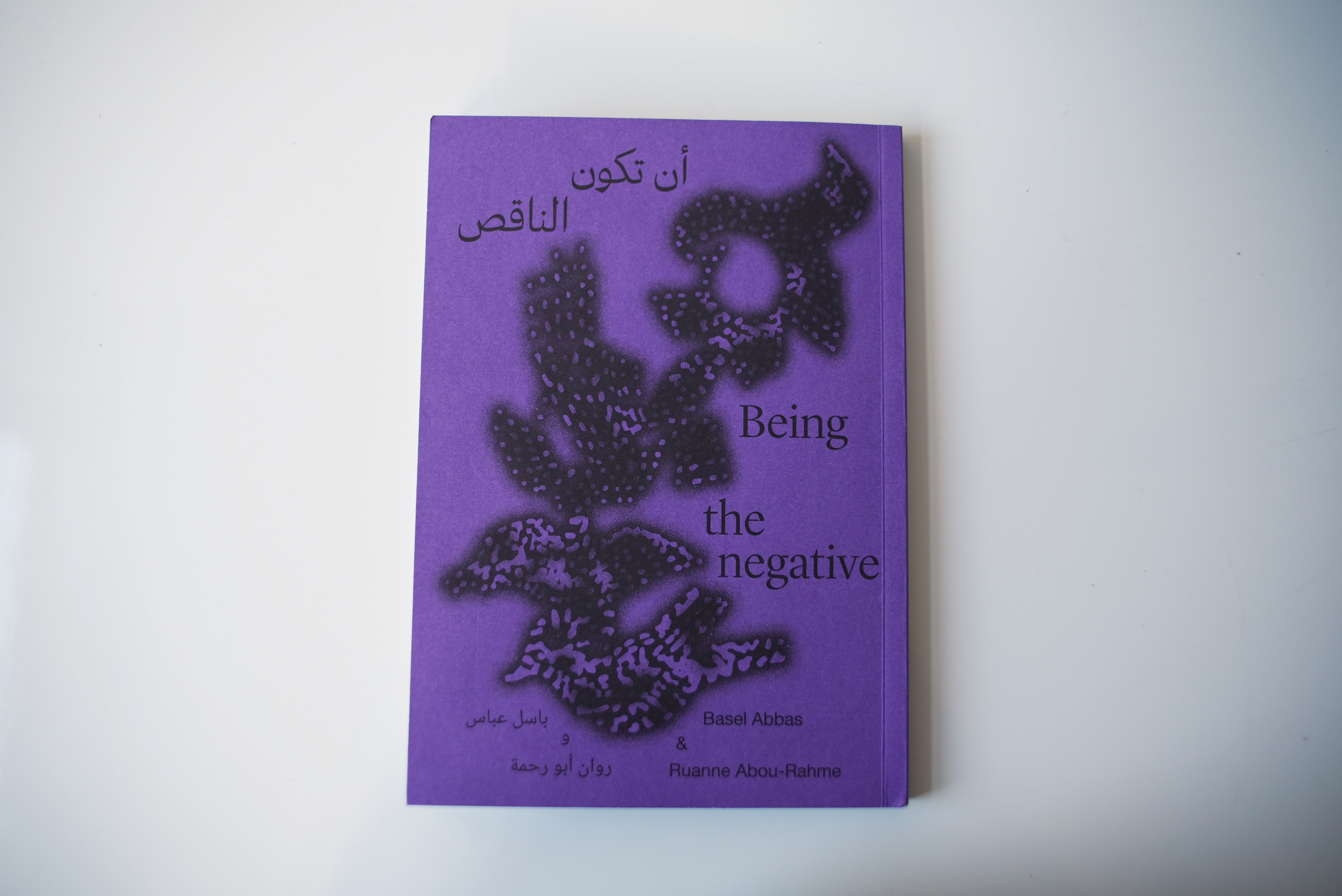



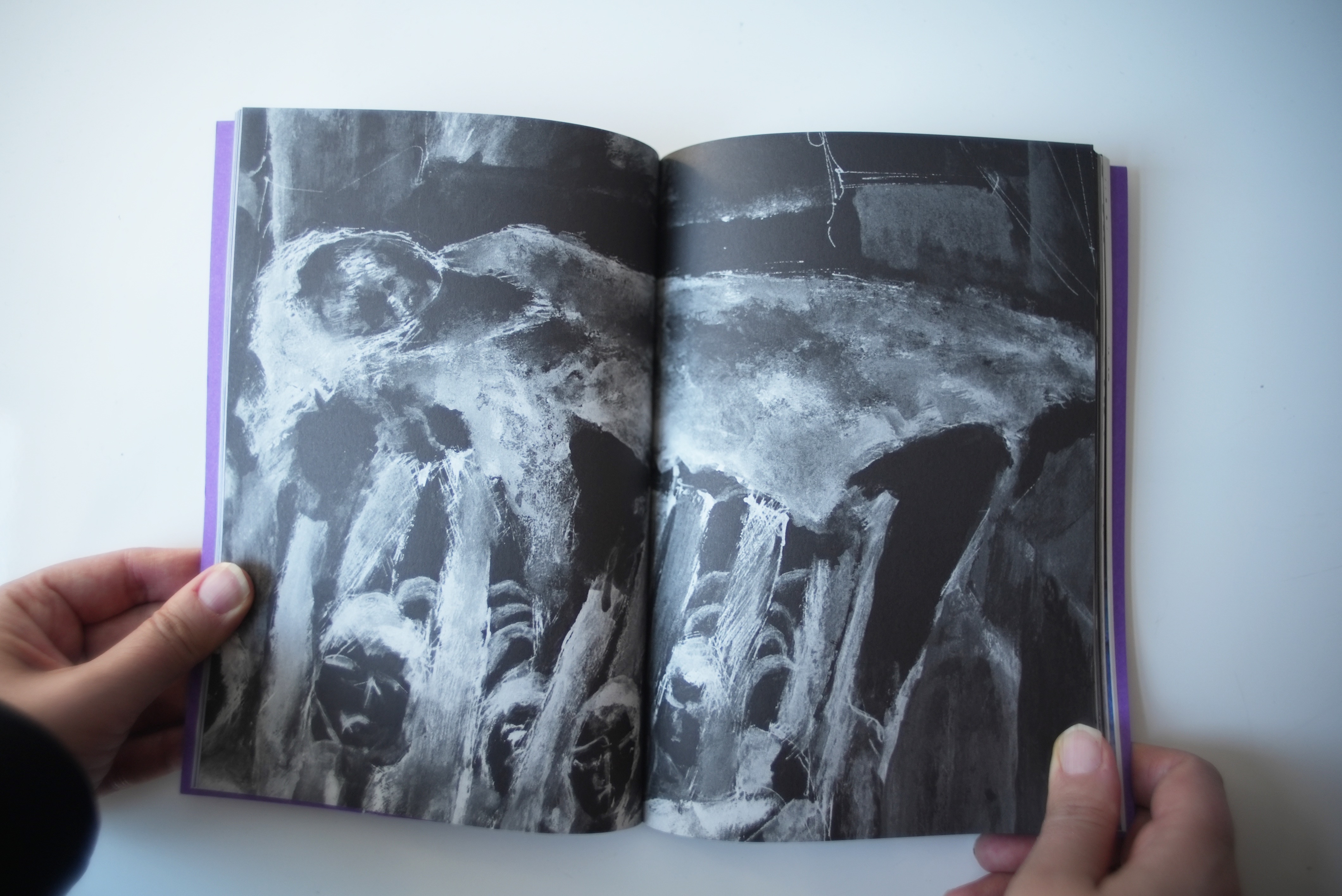


Being the negative
أن تكون الناقص
Basel Abbas and Ruanne Abou-Rahme have been developing a practice that examines the idea of ‘being in the negative’ as a principle form of ongoing dispossession, and the call to ‘becoming the negative’ as a movement towards becoming unbound from colonial capture. First appearing in their work in 2019 and emerging from witnessing the Great March of Return in Gaza and its aftereffects in the Palestinian imaginary, the work is indebted to the multiple forms of resistance and refusal practiced in Palestine every day. In their multidisciplinary practice the space of the negative continues to occupy a principal dimension, asking what it means to resist in impossible conditions, to refuse the terrain as given: What does it mean to breathe where one should not breathe? To emerge from the site of exclusion and extraction unbound? Unfolding through poetics of abstraction and repetition, Being the negative offers Abbas and Abou-Rahme’s first theoretical and discursive consolidation of being in, becoming, and embracing the negative.
Accompanying their text are images from their works, and drawings by the late Tawfik Abou-Rahme, Ruanne Abou-Rahme’s father. These materialize an intergenerational conversation of perseverance and resistance, as with each piece of paper an aesthetic of indebtedness and inheritance is written and rewritten.
Accompanying their text are images from their works, and drawings by the late Tawfik Abou-Rahme, Ruanne Abou-Rahme’s father. These materialize an intergenerational conversation of perseverance and resistance, as with each piece of paper an aesthetic of indebtedness and inheritance is written and rewritten.
يعمل باسل عباس وروان أبو رحمة على تطوير مشروع عمل يبحث فكرة ' أن نكون في الناقص'، كشكل أساسي للتجريد المتواصل، والدعوة لأن 'نصبح الناقص'، كحركةٍ نحو الانعتاق من الأسر الاستعماري. ظهرت الفكرة للمرّة الأولى في عملهما سنة ٢٠١٩، منطلقَةً من مواكبة/ مشاهدة مسيرات العودة في غزة وتأثيراتها اللاحقة على المخيّلة الفلسطينيّة، فيدين العمل بالفضل إلى كافة أشكال المقاومة والرفض التي تجري كلّ يومٍ في فلسطين. يشكّلُ "الناقص" بعداً رئيسياًّ في عملهما متعدّد التخصصات بشكل دائم، بحيث أنهما يتساءلان عن معنى المقاومة في ظروف مستحيلة، وأن ترفض قبول المشهد كما هو: ما معنى أن تتنفَّسَ حيث لا ينبغي لك أن تتنفَّس؟ أن تنبثقَ من موقع الإقصاء والطرد حراًّ؟ يتجلّى مفهوم "ان تكون الناقص" من خلال شاعريّة التجريد والتكرار، فيقدّمَ أوَّلَ تجسيدٍ نظري واستطرادي يقوم به عباس وأبو رحمة لمعنى أن تكون، وأن تصبح وأن تعتنقَ الناقص.
ترافقُ نصُّهم صوراً لأعمالهم، ورسومات للراحل توفيق أبو رحمة، والد روان أبو رحمة. تجسّدُ هذه الرسوم حواراً بين الأجيال عن الصمود والمقاومة، حيث مع كلِّ صفحة، تجري كتابةُ وإعادةُ كتابةِ جماليّةِ الفضلِ والإرث.
ترافقُ نصُّهم صوراً لأعمالهم، ورسومات للراحل توفيق أبو رحمة، والد روان أبو رحمة. تجسّدُ هذه الرسوم حواراً بين الأجيال عن الصمود والمقاومة، حيث مع كلِّ صفحة، تجري كتابةُ وإعادةُ كتابةِ جماليّةِ الفضلِ والإرث.
Basel Abbas and Ruanne Abou-Rahme
Basel Abbas and Ruanne Abou-Rahme have been developing a body of work that questions the suspension of the present and searches for ways in which an altogether different imaginary and language can emerge that is not bound within colonial/capitalist narrative and discourse. In their projects, they find themselves excavating, activating, and inventing incidental narratives, figures, gestures, and sites as material for re-imagining the possibilities of the present. Often reflecting on ideas of non-linearity in the form of returns, amnesia, and deja vu,
and unfolding the slippages between actuality and projection (fiction, myth, wish), what is and what could be.
تغور أعمال باسل عباس وروان أبو رحمة في التقاطعات بين الأدائيّة، والمخيال السياسي، والجسد والعالم الافتراضي. تطرحُ أعمالُهما أسئلةً حول هذا الجمود في الحاضر، وتبحثُ عن سبلٍ يمكن من خلالها انبثاق مخيّلة ولغة مختلفَتين لا تحدّهما السرديّة والخطاب الاستعماري/الرأسمالي. في أعمالهما، نجدهما يعملان على استكشاف، وتنشيط، وابتكار الروايات، والأشكال، والإيماءات واستخدام الأماكن العَرَضيّة كموادٍّ لإعادةِ تخيّلِ إمكانيّات الحاضر. ثمّة تأمّلٍ في الأفكار التي تدور حول الزمن الغير متوازي في أشكال العودة، وفقدان الذاكرة، والإحساس بأنَّك رأيت هذا من قبل، وفي خضمّ هذه العملية، تتكشّف الانزلاقات بين الحقيقةِ والنبوءة (الأسطورة والخرافة والأمنية)، ما كان وما قد يكون.
and unfolding the slippages between actuality and projection (fiction, myth, wish), what is and what could be.
تغور أعمال باسل عباس وروان أبو رحمة في التقاطعات بين الأدائيّة، والمخيال السياسي، والجسد والعالم الافتراضي. تطرحُ أعمالُهما أسئلةً حول هذا الجمود في الحاضر، وتبحثُ عن سبلٍ يمكن من خلالها انبثاق مخيّلة ولغة مختلفَتين لا تحدّهما السرديّة والخطاب الاستعماري/الرأسمالي. في أعمالهما، نجدهما يعملان على استكشاف، وتنشيط، وابتكار الروايات، والأشكال، والإيماءات واستخدام الأماكن العَرَضيّة كموادٍّ لإعادةِ تخيّلِ إمكانيّات الحاضر. ثمّة تأمّلٍ في الأفكار التي تدور حول الزمن الغير متوازي في أشكال العودة، وفقدان الذاكرة، والإحساس بأنَّك رأيت هذا من قبل، وفي خضمّ هذه العملية، تتكشّف الانزلاقات بين الحقيقةِ والنبوءة (الأسطورة والخرافة والأمنية)، ما كان وما قد يكون.




























Abu Jildeh &
al-Armeet /
أبو جلدة
العرميط
العرميط
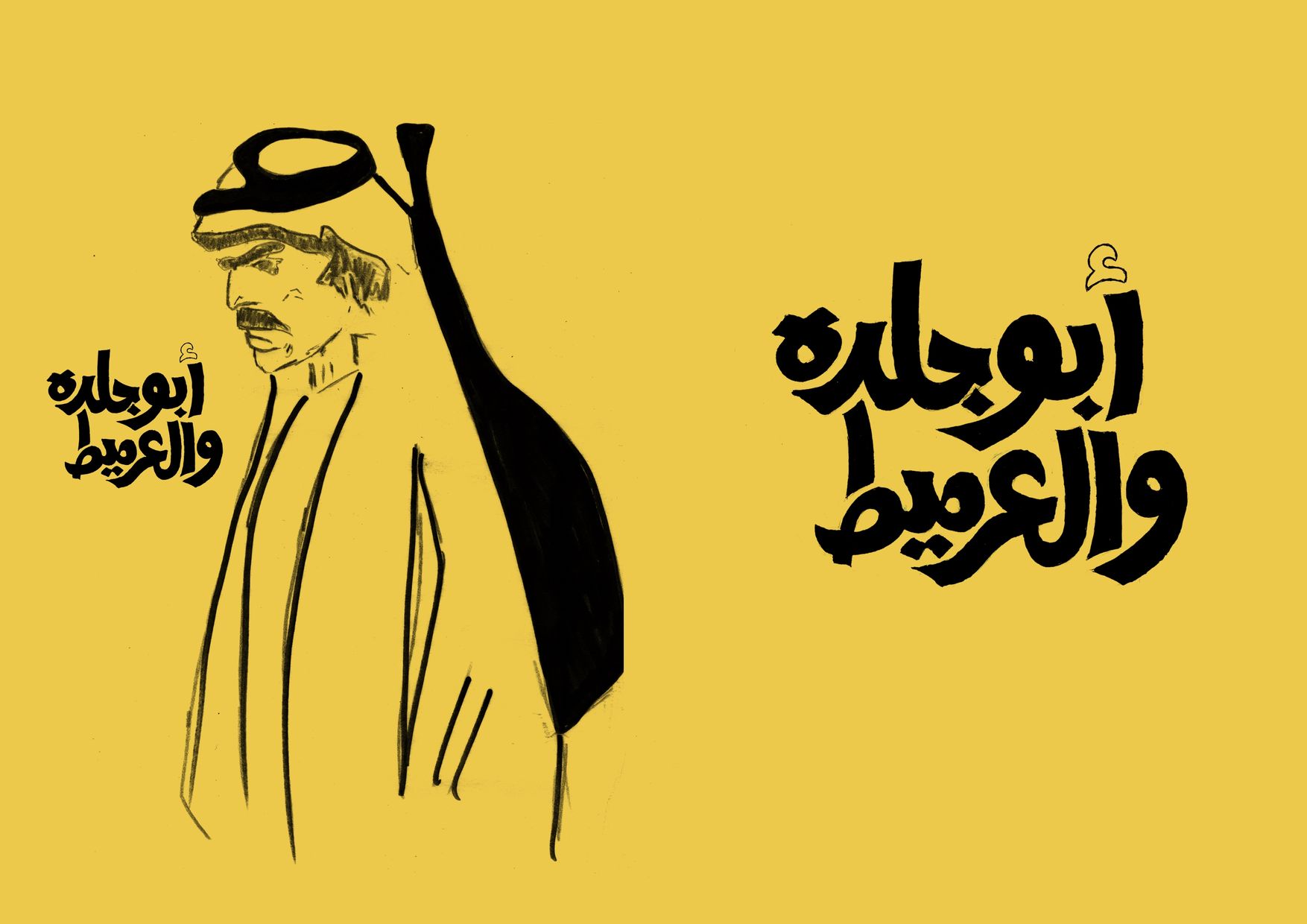
وأردتُ أن أكون صخرة وسط الصخور، آنذاك سأغدو سعيدًا وفخورًا، لأني سأتحد بالأرض وألتحق برفاقي
And I wanted to be a rock among the rocks, then I would be happy and proud, because I would unite with the land and join my comrades.
Buy here
Abu Jildeh and Al-Armeet looks at anti-colonial insurgency in Palestine through the story of the Abu Jildeh bandit gang, a group of farmers from the greater Nablus region who rose up against the British colonization of Palestine. From roughly 1931 to 1934, the band resisted both the British occupation and Palestinian feudal landlords, before they were eventually caught and executed by the British army. Their rebellion, amongst others, paved the way for the 1936 Revolt, a mass uprising against the British colonization of Palestine and the planned Zionist colonization outlined by the Balfour Declaration of 1917. Although the 1936 Revolt was ultimately crushed, it presented a formidable challenge to the British Empire. Its echoes still reverberate today.
A historical narrative unfolding through text, drawings, and archival documents, this book, first published in 2017, is now reprinted in a new edition augmented by an English-language translation.
More about at Abu Jildeh here.
Softcover, 140 pages, 5.6 x 8.4 inches, with insert First Edition (2017) of 1,000 printed in Ramallah, Palestine, published by the Ma’touq Collective
Second Edition (2023) of 1,000 printed in Venice, Italy, published by Bilna’es and Wendy’s Subway
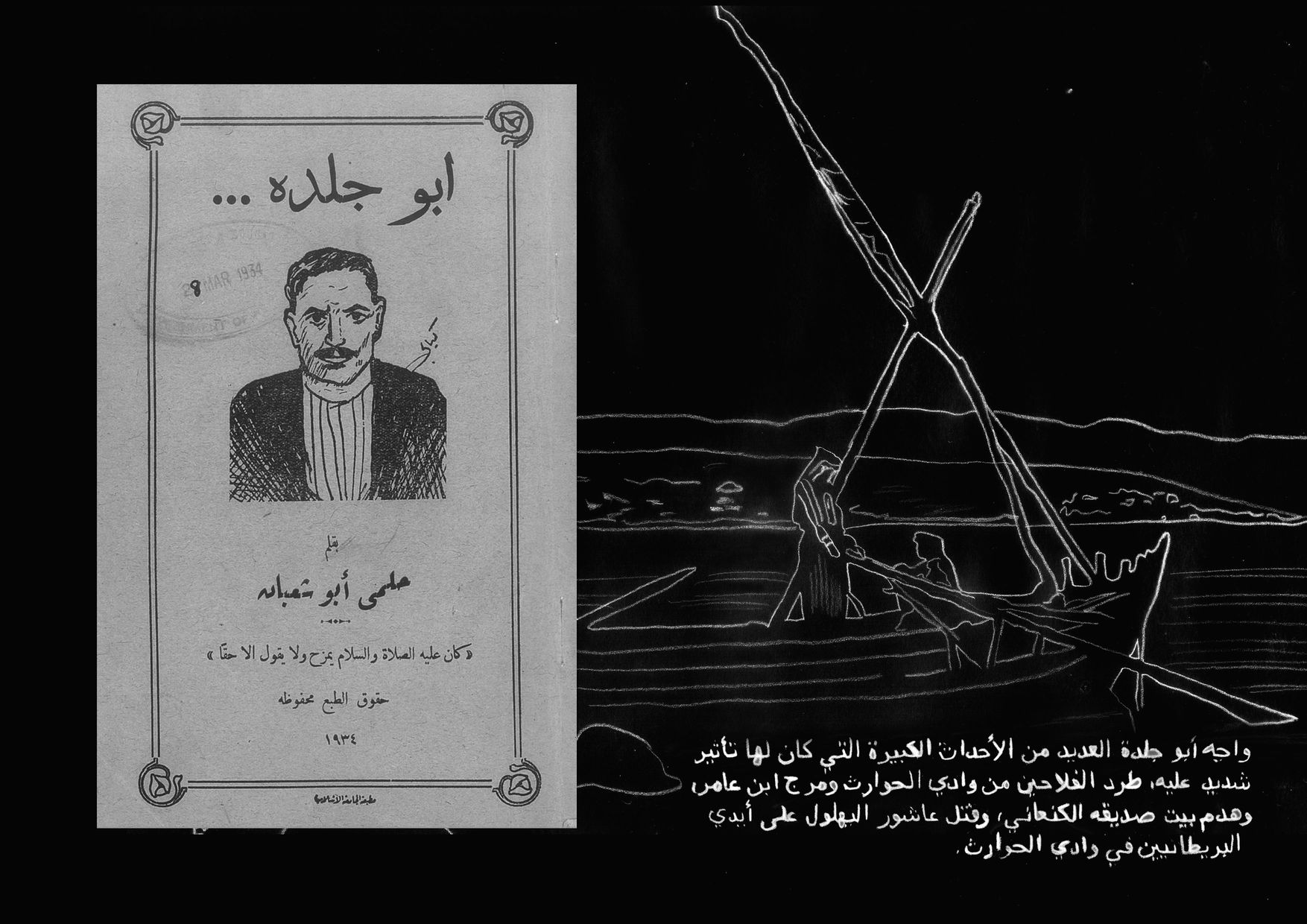


أبو جلدة والعرميط
لتحميل نسخة رقميةلشراء نسخة مطبوعة
يتناول كتاب أبو جلدة والعرميط التمرد المناهض للاستعمار في فلسطين من خلال قصة عصابة أبو جلدة.
عصابة أبو جلدة هي مجموعة من الفلاحين من قضاء مدينة نابلس الذين انتفضوا ضد الاستعمار البريطاني لفلسطين. منذ حوالي عام 1931 إلى 1934، قاومت العصابة كل من الاحتلال البريطاني والإقطاعيين الفلسطينيين، قبل أن يتم القبض عليهم وإعدامهم من قبل الجيش البريطاني. تمردهم، إلى جانب تمردات أخرى، مهّد الطريق لثورة عام 1936. ثورة عام 1936 كانت انتفاضة جماهيرية ضد الاستعمار البريطاني لفلسطين والاستعمار الصهيوني المخطط له كما جاء في وعد بلفور لعام 1917. وعلى الرغم من أن ثورة 1936 قد تم قمعها في نهاية المطاف ، إلّا أنها شكّلت تحديًا هائلًا للإمبراطورية البريطانية، ولا تزال أصداؤها تتردد حتى اليوم.
هذا الكتاب هو رواية تاريخية تتكشف من خلاله النصوص والرسومات والوثائق الأرشيفية. نُشر لأول مرة في عام 2017، يُعاد طباعته الآن في إصدار جديد معزز بترجمة إلى اللغة الإنجليزية.
المزيد عن أبو جلدة هنا.
غلاف ورقي، 140 صفحة، 5.6 × 8.4 بوصة، مع ملحق. طبع ألف نسخة من الطبعة الأولى (2017) في رام الله، فلسطين، ونشرتها مجموعة معطوق.
وطبع ألف نسخة من الطبعة الثانية (2023) طبعت في البندقيّة، إيطاليا، ونشرتها بالناقص ووينديز ساب واي Wendy’s Subway.
Adam HajYahia -
Haitham Haddad /
آدم حاج يحيى -
هيثم حدّاد


Under the glare of the moon
Download here
Buy here
We are thrilled to announce our first printed publication, Under the glare of the moon: Aesthetic Lineages of Revolt written by Adam HajYahia with an accompanying artwork by Haitham Haddad.
“Using wit, performative gestures, embodied articulations, song and encrypted protest chants, the streets of Palestine have been producing a revolutionary language and practice that is consistent and innovative, formulated within a persistent tradition of the oppressed. This revolutionary practice’s intuitive nature and aesthetic cogency are seldom recognised as a climacteric part of a political lineage. Yet, time and again, they demonstrate how inseparable the aesthetic and the political are. It is true that, in our case, this lineage is traced in Palestine’s colonial context, but it also extends beyond – forming alliances and assemblages with other communities fighting violent and extractive structures of power…The streets continue to be the primary battlefield where orders are fractured and alienated communities are united, but, ultimately, we return there each time with the yearning that this time it will be the last call to get free.”
The publication was realized with the support of The Mosaic Rooms on the occasion of the exhibition In the shade of the sun


تحت وهج القمر: السلالات الجماليّة للتمرد
لتحميل نسخة رقمية
لشراء نسخة مطبوعة
يسعدنا أن نعلن عن أول منشور مطبوع لنا، تحت وهج القمر: السلالات الجماليّة للتمرّد،
بقلم آدم حاج يحيى مع عمل فني مصاحب له من إبداع هيثم حداد.
"استطاع الشارع الفلسطينيّ من خلال استخدام الإيماءات الأدائيّة اللمّاحة والتعبيرات الجسديّة والأغنيات وأناشيد التمرّد المشفّرة من إنتاج لغة وممارسة ثوريّة ثابتة ومبتكرة، صِيغت ضمن تقليد المقهورين المستمرّ. من النادر أن يتمّ الاعتراف بالطبيعة البديهيّة لهذه الممارسة الثوريّة، والقدرة التي تملكها الجماليّة لتعتبر جزء أساسيّ من السلاسة السياسيّة. حيث نستطيع رؤية أنّ الجماليّ والسياسيّ لا يمكن أن ينفصلا. ومن الصحيح، أنّه وفي حالتنا، يمكن تتبّع هذه السلالة في السياق الاستعماريّ لفلسطين، ولكنّها تمتدّ لأبعد من ذلك - مثل تشكيل التحالفات والتجمّعات مع مجتمعات مناضلة تحارب هياكل القوى العنيفة والاستخراجيّة… ستبقى الشوارع ساحة المعركة الأساسيّة، حيث تتكسّر الأنظمة، وتتّحد المجتمعات المعزولة، ونعود إليها دائمًا في كلّ مرّة، توّاقين وراجين أن تكون المرّة الأخيرة، والنداء الأخير للتحرّر. "
تم نشر هذا العمل بدعم من الموزايك رومز (Mosaic Rooms) بمناسبة معرض في ظل الشمس.
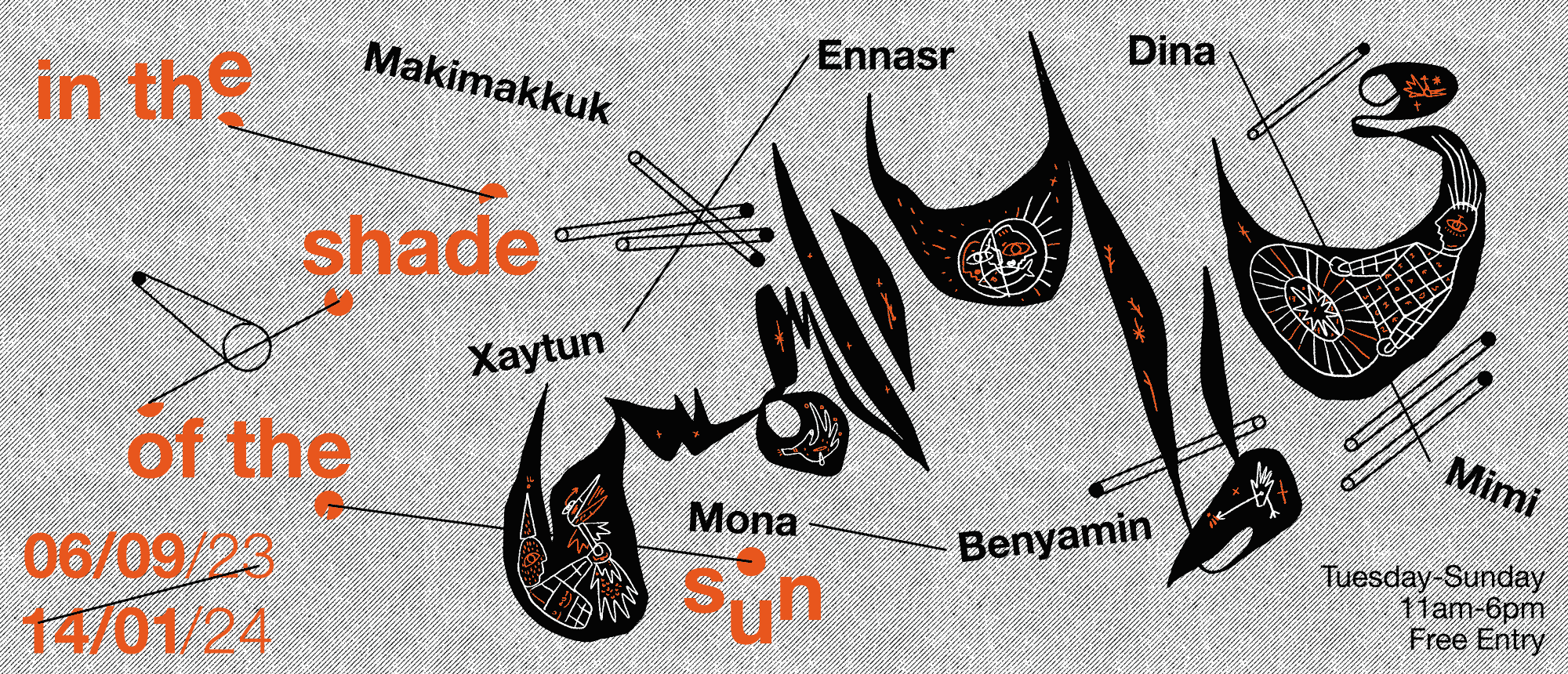
Poster design: Studio Mnjnk
In the shade of the sun brings together new commissions from Mona Benyamin, Xaytun Ennasr, Dina Mimi and Makimakkuk at The Mosaic Rooms in London. Each of these artists are forging an entirely new language to think about and with Palestine. Their practices are connected in a radical politics, finding expressions in seemingly soft forms, absurd images, and poetic wanderings.
Adam HajYahia was invited by Bilna’es to curate the public program, he writes:
Bilna’es is the Arabic word for ‘in the negative’. The term evokes a politics of being and producing from within the moment of catastrophe, forging from beyond it, the multitude of possibilities across the impossible. This public programme borrows from this methodology to consider the potentialities that could materialise in the cracks of the crises of the present.
يقدم معرض "في ظل الشمس" تكليفات فنيّة جديدة من الفنانينات منى بنيامين وزيتون النصر ودينا ميمي وماكيماكوك في الموزايك رومز (Mosaic Rooms) في لندن. يقوم كل واحد من الفنانين بصياغة لغة جديدة تمامًا للتفكير حول فلسطين ومعها. ترتبط ممارساتهم بالسياسة الجذرية حيث يجدون تعبيرات في أشكال تبدو ناعمة، وصور متناقضة، وتجولات شعرية.
تمت دعوت آدم حاج يحيى من قبل بالناقص لإشراف البرنامج العام، فكتب:
بالناقص هي الكلمة العربية التي تعني ''في النفي'. يستحضر المصطلح سياسة الوجود والإنتاج من داخل لحظة الكارثة، وصياغة من وراءها، العديد من الاحتمالات عبر المستحيل. ويستمد هذا البرنامج العام من هذه المنهجية لاستكشاف الإمكانيات التي يمكن أن تتجسد في شقوق أزمات الحاضر.
In the shade of the sun
Mona Benyamin, Xaytun Ennasr, Makimakkuk, Dina Mimi
6/09/23—14/01/24
In the shade of the sun brings together new commissions from Mona Benyamin, Xaytun Ennasr, Dina Mimi and Makimakkuk at The Mosaic Rooms in London. Each of these artists are forging an entirely new language to think about and with Palestine. Their practices are connected in a radical politics, finding expressions in seemingly soft forms, absurd images, and poetic wanderings.
Adam HajYahia was invited by Bilna’es to curate the public program, he writes:
The public programming for In the shade of the sun builds on what Bilna’es’ exhibition conception already proposes. Methodologically, we need to radically rethink the formulations within which cultural and artistic work is produced, circulated, and consumed. For the burdensome demands of the art market and industry, the invisibilised labour of artists and cultural workers, as well as hierarchies and mediation configurations as we know them, are not conducive to thriving and sustainable futures. Aesthetically, and therefore politically, there is a need to continue the search for a new language to tackle the particularities of our present fascist neoliberal predicaments while also devising alternative assemblages, economies, and relations for an otherwise.
Bilna’es is the Arabic word for ‘in the negative’. The term evokes a politics of being and producing from within the moment of catastrophe, forging from beyond it, the multitude of possibilities across the impossible. This public programme borrows from this methodology to consider the potentialities that could materialise in the cracks of the crises of the present.
يقدم معرض "في ظل الشمس" تكليفات فنيّة جديدة من الفنانينات منى بنيامين وزيتون النصر ودينا ميمي وماكيماكوك في الموزايك رومز (Mosaic Rooms) في لندن. يقوم كل واحد من الفنانين بصياغة لغة جديدة تمامًا للتفكير حول فلسطين ومعها. ترتبط ممارساتهم بالسياسة الجذرية حيث يجدون تعبيرات في أشكال تبدو ناعمة، وصور متناقضة، وتجولات شعرية.
تمت دعوت آدم حاج يحيى من قبل بالناقص لإشراف البرنامج العام، فكتب:
يعتمد البرامج العام لمعرض "في ظل الشمس" على المفهوم ذاته الذي يقترحه بالناقص. ومن الناحية المنهجية، نحتاج إلى إعادة التفكير بشكل جذري في الصياغات التي يتم من خلالها إنتاج العمل الثقافي والفني وتعميمه واستهلاكه. بالنسبة للمتطلبات المرهقة لسوق الفن وصناعته، فإن العمل غير المرئي للفنانين والعاملين في مجال الثقافة، فضلاً عن التسلسلات الهرمية وتكوينات الوساطة كما نعرفها، لا يفضي إلى مستقبل مزدهر ومستدام. من الناحية الجمالية، وبالتالي السياسية، هناك حاجة لمواصلة البحث عن لغة جديدة لمعالجة خصوصيات مآزقنا النيوليبرالية الفاشية الحالية مع ابتكار تجمعات واقتصادات وعلاقات بديلة لطريقة أخرى.
بالناقص هي الكلمة العربية التي تعني ''في النفي'. يستحضر المصطلح سياسة الوجود والإنتاج من داخل لحظة الكارثة، وصياغة من وراءها، العديد من الاحتمالات عبر المستحيل. ويستمد هذا البرنامج العام من هذه المنهجية لاستكشاف الإمكانيات التي يمكن أن تتجسد في شقوق أزمات الحاضر.





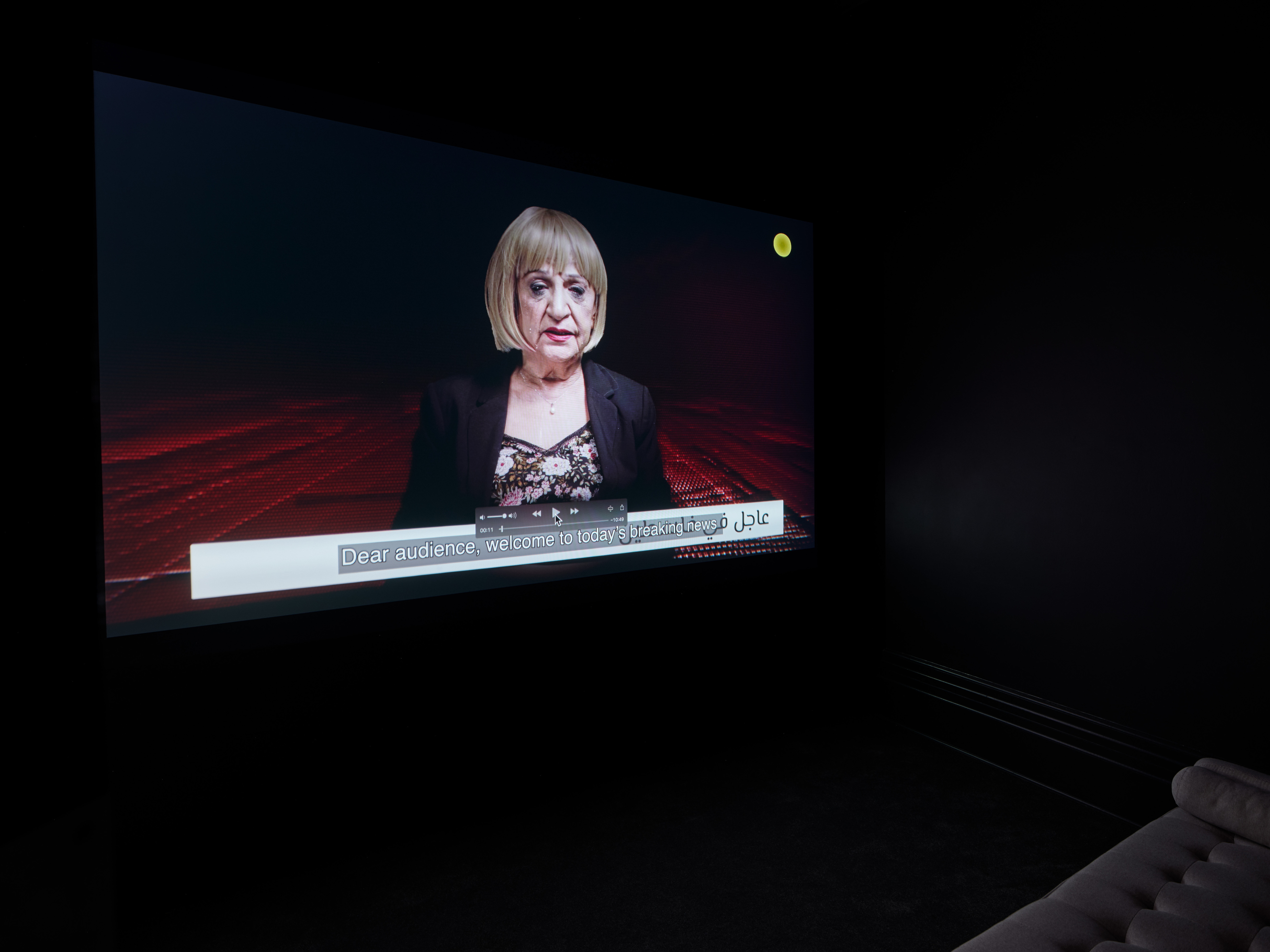




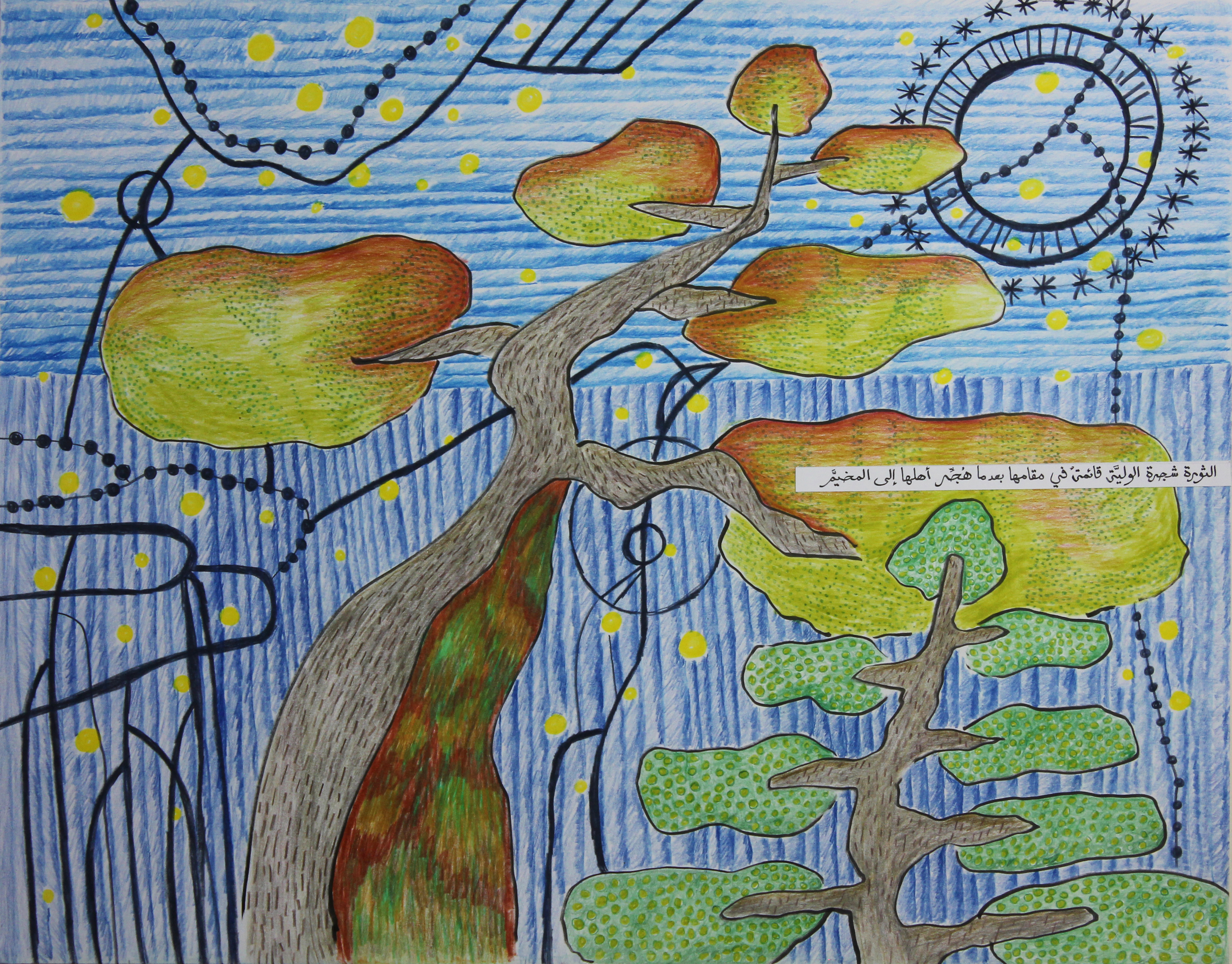
Dina Mimi (@___sa3lok), The melancholy of this useless afternoon
Dina Mimi’s project The melancholy of this useless afternoon unfolds through two chapters reflecting on the role of the fugitive and the smuggler. Chapter I layers images of birdsong competitions, revolutionary songs from Oman, Yemen and Palestine with a narrative contemplating movement, loss, separation, and revolutionary practice. Chapter II employs a clandestine style to document the practice of bird smuggling and the part the human body plays in this act. These are accompanied by a framed vest with an organic material resembling what the birds are traditionally hidden within.
Dina Mimi is a visual artist who lives and works in Jerusalem. Her practice is multifaceted and uses video, sound, performance, and text. Dina has been researching issues and subjects regarding the body and death in the public sphere, and notions of visibility and invisibility in the relation of archaeology to the object, and the museum to death. She has also been researching protest as a performance. Her work examines the role of the body-force in public space in Palestine.
Dina Mimi’s project The melancholy of this useless afternoon unfolds through two chapters reflecting on the role of the fugitive and the smuggler. Chapter I layers images of birdsong competitions, revolutionary songs from Oman, Yemen and Palestine with a narrative contemplating movement, loss, separation, and revolutionary practice. Chapter II employs a clandestine style to document the practice of bird smuggling and the part the human body plays in this act. These are accompanied by a framed vest with an organic material resembling what the birds are traditionally hidden within.
Dina Mimi is a visual artist who lives and works in Jerusalem. Her practice is multifaceted and uses video, sound, performance, and text. Dina has been researching issues and subjects regarding the body and death in the public sphere, and notions of visibility and invisibility in the relation of archaeology to the object, and the museum to death. She has also been researching protest as a performance. Her work examines the role of the body-force in public space in Palestine.
دينا ميمي، حزن هذا العصر البائس
يُعرض في لندن حتى 14 يناير 2024
ينكشف حزن هذا العصر البائس من خلال فصلين يعكسان دور الهارب والمهرب. الفصل الأول يتضمن صورًا لمسابقات غناء الطيور وأغاني الثورة من عمان واليمن وفلسطين مع سرد يتأمل في الحركة والفقدان والانفصال والممارسة الثورية. الفصل الثاني يستخدم أسلوبًا سريًا لوثائق ممارسة تهريب الطيور والدور الذي يلعبه الجسم البشري في هذا الفعل. يرافق ذلك بستان عضوي يشبه المادة التي يتم تقديم الطيور داخلها تقليديًا.
دينا ميمي هي فنانة بصرية تعيش وتعمل في القدس. ممارستها متعددة الجوانب، تستخدم الفيديو، والصوت، والأداء، والنص. تبحث دينا في قضايا ومواضيع تتعلق بالجسد والموت في الفضاء العام، وكذلك في مفاهيم الظهور والاختفاء في علاقة علم الآثار بالشيء، وعلاقة المتحف بالموت. كما أنها بحثت في الاحتجاج بوصفه شكلاً من أشكال الأداء. أعمالها تفحص دور الجسد-القوة في الفضاء العام في فلسطين.
يُعرض في لندن حتى 14 يناير 2024
ينكشف حزن هذا العصر البائس من خلال فصلين يعكسان دور الهارب والمهرب. الفصل الأول يتضمن صورًا لمسابقات غناء الطيور وأغاني الثورة من عمان واليمن وفلسطين مع سرد يتأمل في الحركة والفقدان والانفصال والممارسة الثورية. الفصل الثاني يستخدم أسلوبًا سريًا لوثائق ممارسة تهريب الطيور والدور الذي يلعبه الجسم البشري في هذا الفعل. يرافق ذلك بستان عضوي يشبه المادة التي يتم تقديم الطيور داخلها تقليديًا.
دينا ميمي هي فنانة بصرية تعيش وتعمل في القدس. ممارستها متعددة الجوانب، تستخدم الفيديو، والصوت، والأداء، والنص. تبحث دينا في قضايا ومواضيع تتعلق بالجسد والموت في الفضاء العام، وكذلك في مفاهيم الظهور والاختفاء في علاقة علم الآثار بالشيء، وعلاقة المتحف بالموت. كما أنها بحثت في الاحتجاج بوصفه شكلاً من أشكال الأداء. أعمالها تفحص دور الجسد-القوة في الفضاء العام في فلسطين.
In their multimedia installation, Revolution is a forest that the colonist can’t burn, Xaytun Ennasr celebrates trees as symbols of resistance and devotion. Through the artist’s aesthetic of radical softness, the installation examines what a revolutionary relationship with nature looks like. Trees are situated not as resources waiting to be extracted but as beings that are loved and that love back. That relationship is presented through a variety of media, including drawings, poetry, ceramics, textiles, living olive and fig trees, and an interactive digital game.
Xaytun Ennasr’s work as a multidisciplinary artist is centered around the liberation of Palestine, radical softness, and revolutionary cultural production. They use a variety of mediums including videogames, drawings, ceramics, installation, and text to start a conversation around a world that transcends beyond the oppressive capitalism, colonialism, and patriarchal reality of the one we currently occupy.
Xaytun Ennasr’s work as a multidisciplinary artist is centered around the liberation of Palestine, radical softness, and revolutionary cultural production. They use a variety of mediums including videogames, drawings, ceramics, installation, and text to start a conversation around a world that transcends beyond the oppressive capitalism, colonialism, and patriarchal reality of the one we currently occupy.
زيتون النصر، الثورة غابة ليس بوسع المستعمر حرقها
في عملها التركيبي ‘الثورة غابة ليس بوسع المستعمر حرقها‘, تحتفي زيتون النصر بالأشجار كرموز للمقاومة والتفاني. يفحص العمل علاقة الثورة مع الطبيعة من خلال الجمالية الجذرية للنعومة والرّقة. تلك الأشجار ليست موجودة كمجرّد موارد في انتظار استخراجها، بل هي كائنات حيّة تُحبّ وتحبّ بالمقابل. تجسّد هذه العلاقة من خلال مجموعة من الوسائط الفنية، كالرسومات والشّعر والسيراميك والنسيج وأشجار الزيتون والتين الحيّة بالاضافة الى لعبة تفاعلية رقمية.
يتمحور عمل زيتون النصر كفنانة متعددة التخصصات حول موضوع تحرير فلسطين، والنعومة الجذرية، والإنتاج الثقافي الثوري. يستخدمون مجموعة متنوعة من الوسائط بما في ذلك ألعاب الفيديو والرسومات والسيراميك والأعمال التركيبية والنصوص لبدء محادثة حول عالم يتجاوز الرأسمالية القمعية والاستعمار والواقع الأبوي للعالم الذي نحتله حاليًا.
في عملها التركيبي ‘الثورة غابة ليس بوسع المستعمر حرقها‘, تحتفي زيتون النصر بالأشجار كرموز للمقاومة والتفاني. يفحص العمل علاقة الثورة مع الطبيعة من خلال الجمالية الجذرية للنعومة والرّقة. تلك الأشجار ليست موجودة كمجرّد موارد في انتظار استخراجها، بل هي كائنات حيّة تُحبّ وتحبّ بالمقابل. تجسّد هذه العلاقة من خلال مجموعة من الوسائط الفنية، كالرسومات والشّعر والسيراميك والنسيج وأشجار الزيتون والتين الحيّة بالاضافة الى لعبة تفاعلية رقمية.
يتمحور عمل زيتون النصر كفنانة متعددة التخصصات حول موضوع تحرير فلسطين، والنعومة الجذرية، والإنتاج الثقافي الثوري. يستخدمون مجموعة متنوعة من الوسائط بما في ذلك ألعاب الفيديو والرسومات والسيراميك والأعمال التركيبية والنصوص لبدء محادثة حول عالم يتجاوز الرأسمالية القمعية والاستعمار والواقع الأبوي للعالم الذي نحتله حاليًا.



Mona Benyamin, Tomorrow, Again
Tomorrow, Again, by Mona Benyamin stages a dysfunctional news broadcast that consists of different segments which recreate and react to various prominent daily catastrophes from Palestine. Instead of a spoken narrative, the film resorts to exaggerated emotional and physical displays. It utilises fragmented and often conflicting testimonies, doppelgängers, and a surrealist visual language to draw on notions of truth and fiction, and differing temporalities. The cast of the film sees two protagonists, the artist’s parents, assume multiple identities as they narrate and consume their own stories in an endless cycle.
Tomorrow, Again, by Mona Benyamin stages a dysfunctional news broadcast that consists of different segments which recreate and react to various prominent daily catastrophes from Palestine. Instead of a spoken narrative, the film resorts to exaggerated emotional and physical displays. It utilises fragmented and often conflicting testimonies, doppelgängers, and a surrealist visual language to draw on notions of truth and fiction, and differing temporalities. The cast of the film sees two protagonists, the artist’s parents, assume multiple identities as they narrate and consume their own stories in an endless cycle.
منى بنيامين، غدًا مرّة أخرى
يقدم فيلم غدًا مرة أخرى، من إخراج منى بنيامين، بثًا إخباريًا مختلًا يتكّون من مقاطع مختلفة تعيد خلق مختلف الكوارث اليومية البارزة في فلسطين وتتفاعل معها. بدلاً من السرد المحكي، يلجأ الفيلم إلى عروض عاطفية وجسدية مبالغ فيها. يستخدم شهادات مجزأة وغالباً متضاربة ، وأشخاص مشابهين ، ولغة بصرية سريالية لاستنتاج مفاهيم الحقيقة والخيال، والأزمنة المؤقتة المختلفة. يرى طاقم الفيلم أن البطلين، والدي الفنانة، يتخذان هويات متعددة بينما يرويان ويستهلكان قصصهما الخاصة في
دورة لا نهاية لها.
يقدم فيلم غدًا مرة أخرى، من إخراج منى بنيامين، بثًا إخباريًا مختلًا يتكّون من مقاطع مختلفة تعيد خلق مختلف الكوارث اليومية البارزة في فلسطين وتتفاعل معها. بدلاً من السرد المحكي، يلجأ الفيلم إلى عروض عاطفية وجسدية مبالغ فيها. يستخدم شهادات مجزأة وغالباً متضاربة ، وأشخاص مشابهين ، ولغة بصرية سريالية لاستنتاج مفاهيم الحقيقة والخيال، والأزمنة المؤقتة المختلفة. يرى طاقم الفيلم أن البطلين، والدي الفنانة، يتخذان هويات متعددة بينما يرويان ويستهلكان قصصهما الخاصة في
دورة لا نهاية لها.
Makimakkuk (@makimakkuk), What remains in the museum
Sonic Live Performance (Canceled)
Makimakkuk was set to debut a newly commissioned sound work titled What remains in the museum. The multi-layered work was meant to sonically reflect on identity, colonisation, love and relationships. It was set to be performed singularly live in the exhibition during a special event.
كانت ستقدم ماكيمكّوك عملاً صوتيًا تم تكليفه حديثًا بعنوان ما بقي في المتحف. كان المقصود من العمل متعدد الطبقات أن يعكس صوتيًا الهوية والاستعمار والحب والعلاقات. وكان من المفترض أن يتم العرض في المعرض خلال فعالية خاصة ضمن البرنامج العام.
Sonic Live Performance (Canceled)
Makimakkuk was set to debut a newly commissioned sound work titled What remains in the museum. The multi-layered work was meant to sonically reflect on identity, colonisation, love and relationships. It was set to be performed singularly live in the exhibition during a special event.
ماكيمكّوك، ما بقي في المتحف
آداء حي، (ملغى)
آداء حي، (ملغى)
كانت ستقدم ماكيمكّوك عملاً صوتيًا تم تكليفه حديثًا بعنوان ما بقي في المتحف. كان المقصود من العمل متعدد الطبقات أن يعكس صوتيًا الهوية والاستعمار والحب والعلاقات. وكان من المفترض أن يتم العرض في المعرض خلال فعالية خاصة ضمن البرنامج العام.

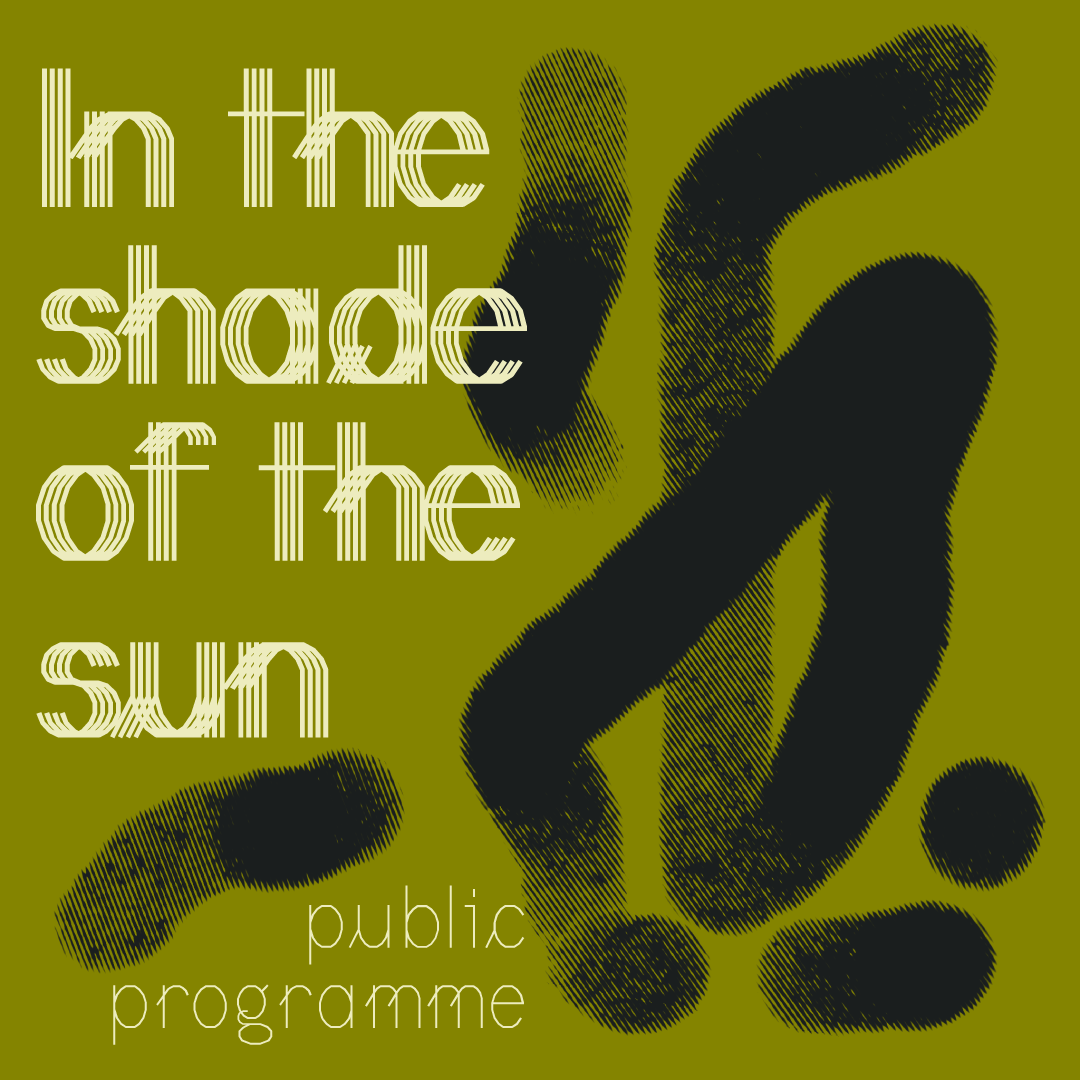
Adam HajYahia (@kimikku) has been specially invited by Bilna’es to co-curate the exhibition’s accompanying public programme.
HajYahia is an independent researcher, curator, and culture producer. He is from Haifa, Palestine. Adam’s research interests revolve around structural an is hierarchical violence, and its intersections with capitalist, colonial, sexual, and social dynamics in Palestine and beyond.
HajYahia is an independent researcher, curator, and culture producer. He is from Haifa, Palestine. Adam’s research interests revolve around structural an is hierarchical violence, and its intersections with capitalist, colonial, sexual, and social dynamics in Palestine and beyond.
تمت دعوة آدم حاج يحيى خصيصًا من قبل بالناقص للمشاركة في الإشراف على البرنامج العام المصاحب للمعرض.
الحاج يحيى هو باحث مستقل، وقيّم متحف، ومنتج ثقافي. وهو من حيفا، فلسطين. تتمحور اهتمامات آدم البحثية حول العنف الهيكلي الهرمي، وتقاطعاته مع الديناميكيات الرأسمالية والاستعمارية والجنسية والاجتماعية في فلسطين وخارجها.
الحاج يحيى هو باحث مستقل، وقيّم متحف، ومنتج ثقافي. وهو من حيفا، فلسطين. تتمحور اهتمامات آدم البحثية حول العنف الهيكلي الهرمي، وتقاطعاته مع الديناميكيات الرأسمالية والاستعمارية والجنسية والاجتماعية في فلسطين وخارجها.

El Kontessa /
الكونتيسة
Nos Habet Caramel, El Kontessa's debut album, brings together 7 sample-heavy,
beat-driven tracks with accelerating polyrhythms, echoing Mahraganat percussion, vocal
hits, bursts of synths and fragments from Cairo's sonic landscape.
Bringing together her production and experience as a DJ, El Kontessa navigates those two worlds seamlessly, creating a condensed and shorter DJ-like structure with every track.
Like the artwork, illustrated by El Kontessa herself, the album takes on slippery shapeshifting forms that seem to dissipate just as they solidify. The sounds of ‘Nos Habet Caramel’ are oversaturated, entangled yet fluid, carrying in them a sense of longing that is constantly disrupted and changing.
نص حبة كراميل، ألبوم الكونتيسة الأول، يضمّ ٧ مقطوعات موسيقية غنيّة بالعيّنات الصوتية، تمتاز بالإيقاعات المتداخلة والمتسارعة، والتي تردّد موسيقى المهرجانات، وفيض من السينثات، واجزاء من المشهد الصوتي للقاهرة.
يتّخذ الألبوم أشكالًا متغيّرة ومتقلّبة تبدو كأنَّها تتلاشى بمجرّد ظهورها، وهي تشبه في ذلك غلاف الالبوم، الذي رسمته الكونتيسة بنفسها. يوجد في أصوات "نص حبة كراميل" فائض من الاضطراب، هي أصوات متشابِكة ولكن متدفّقة في نفس الوقت، تحمل داخلها شعورًا بالحنين لكّنه معرّض بشكل مستمرّ للتقطّع والتغيّر.
Bringing together her production and experience as a DJ, El Kontessa navigates those two worlds seamlessly, creating a condensed and shorter DJ-like structure with every track.
Like the artwork, illustrated by El Kontessa herself, the album takes on slippery shapeshifting forms that seem to dissipate just as they solidify. The sounds of ‘Nos Habet Caramel’ are oversaturated, entangled yet fluid, carrying in them a sense of longing that is constantly disrupted and changing.
نص حبة كراميل، ألبوم الكونتيسة الأول، يضمّ ٧ مقطوعات موسيقية غنيّة بالعيّنات الصوتية، تمتاز بالإيقاعات المتداخلة والمتسارعة، والتي تردّد موسيقى المهرجانات، وفيض من السينثات، واجزاء من المشهد الصوتي للقاهرة.
يتّخذ الألبوم أشكالًا متغيّرة ومتقلّبة تبدو كأنَّها تتلاشى بمجرّد ظهورها، وهي تشبه في ذلك غلاف الالبوم، الذي رسمته الكونتيسة بنفسها. يوجد في أصوات "نص حبة كراميل" فائض من الاضطراب، هي أصوات متشابِكة ولكن متدفّقة في نفس الوقت، تحمل داخلها شعورًا بالحنين لكّنه معرّض بشكل مستمرّ للتقطّع والتغيّر.
OUT ON Bilna'es JULY 28, 2023
bilnaes.bandcamp.com
El Kontessa : soundcloud.com/elkontessa
instagram.com/elkontessa_/
All tracks produced and recorded by El Kontessa
Artwork: Art direction and typography by Yazan El Zubi
Illustration by Fajr Soliman
Mixed by Ismael Hosny
Mastered by Heba Kadry
About
El Kontessa, is the stage name of Cairo-based producer, DJ, and multidisciplinary artist Fajr Soliman, her city comes alive. In her voice, Cairo’s soundscapes are deconstructed, combined with...
